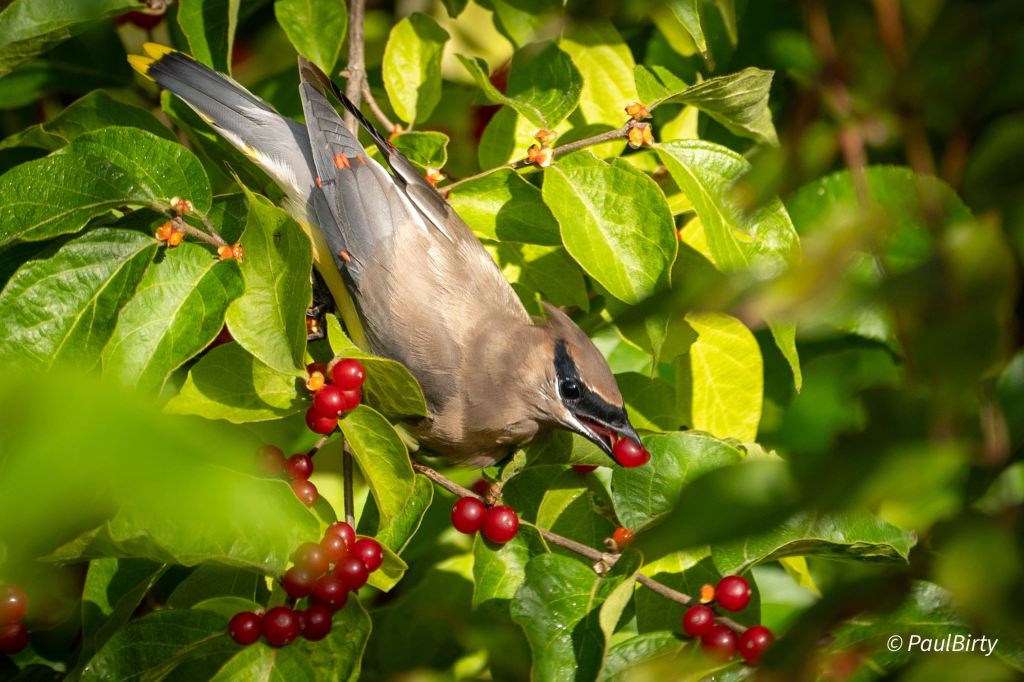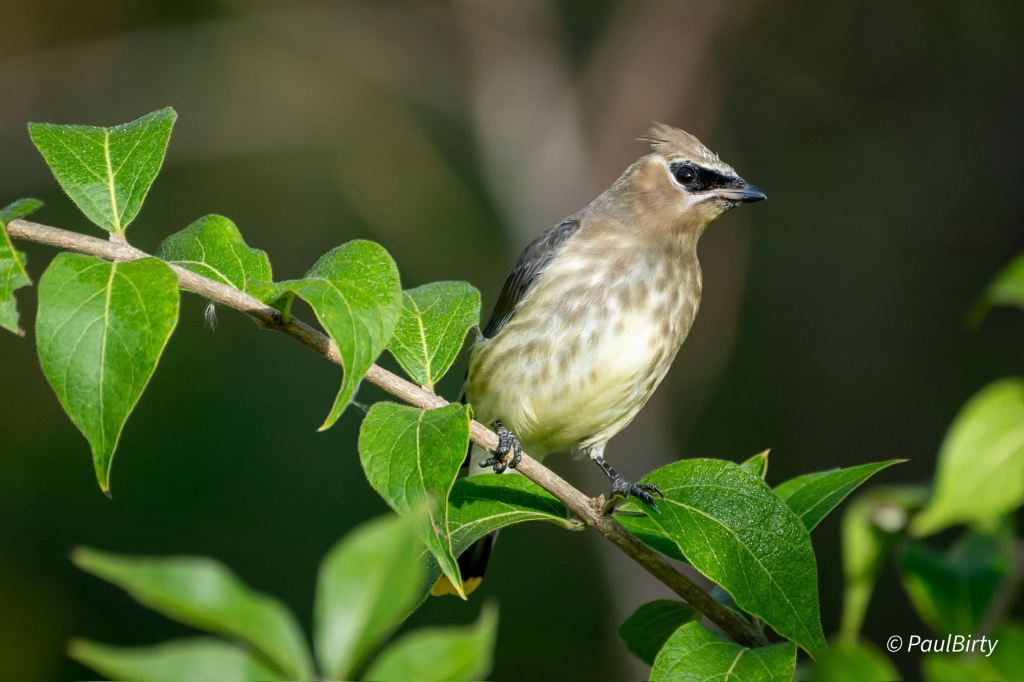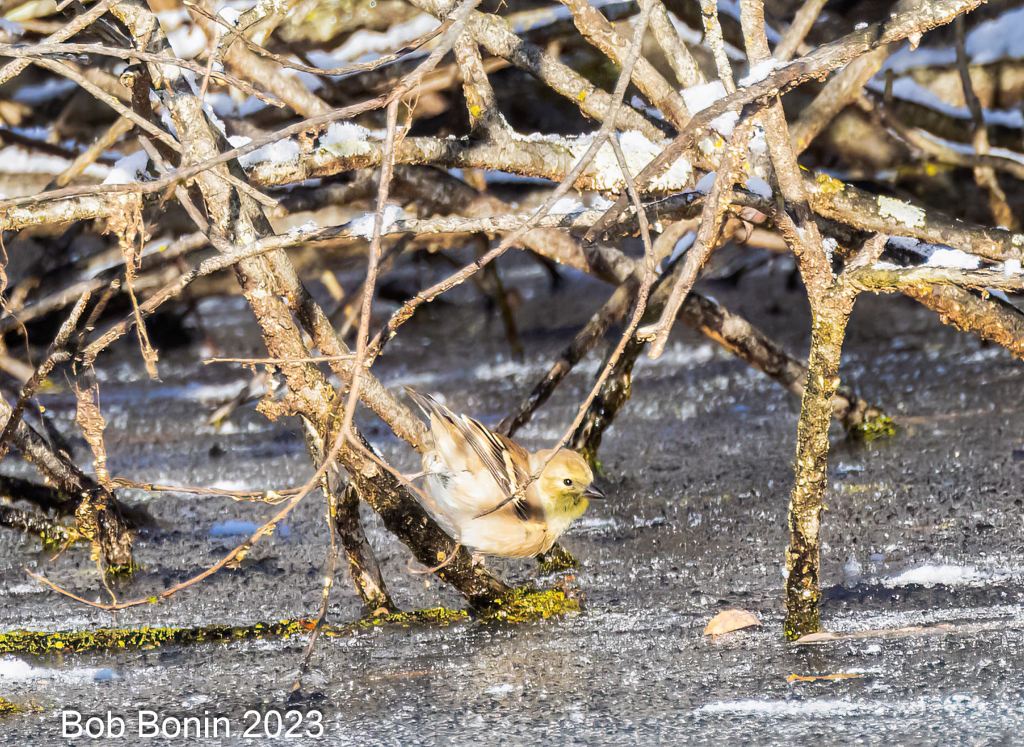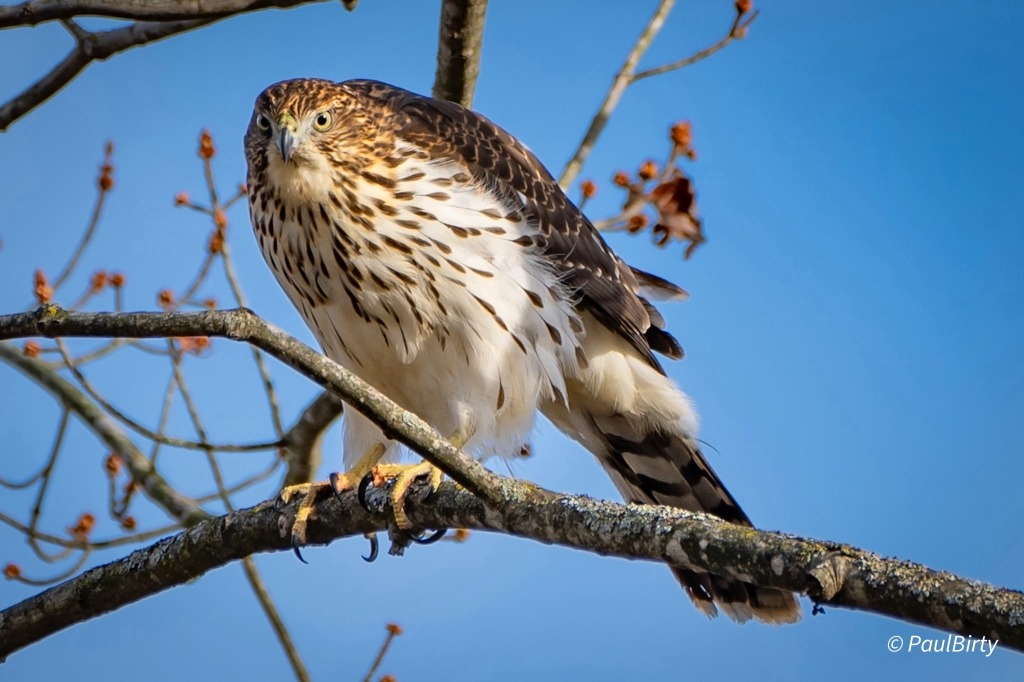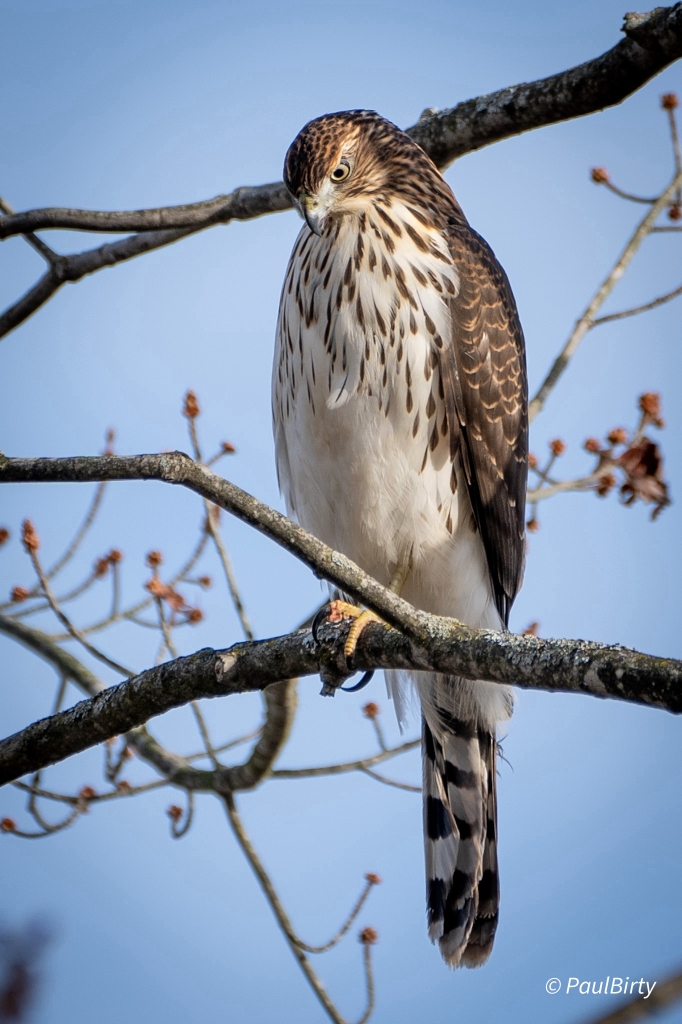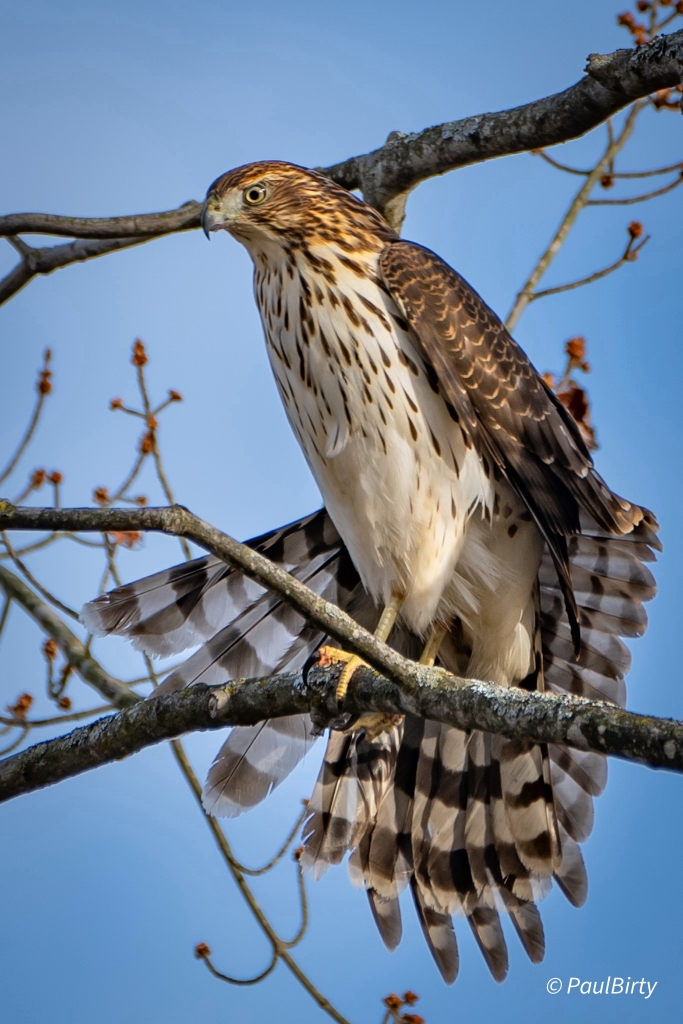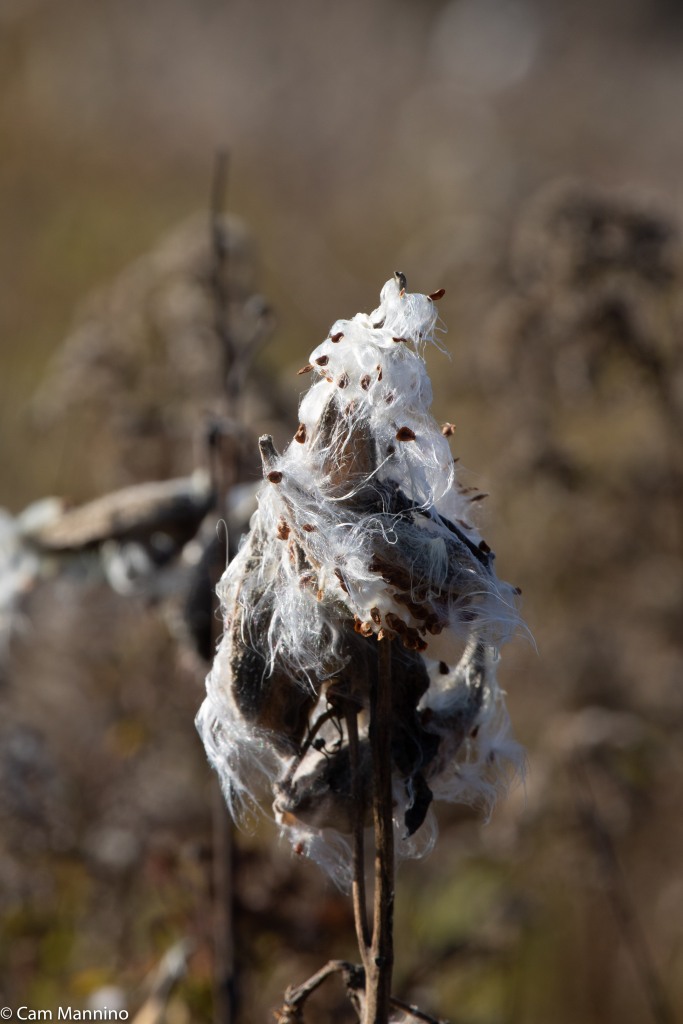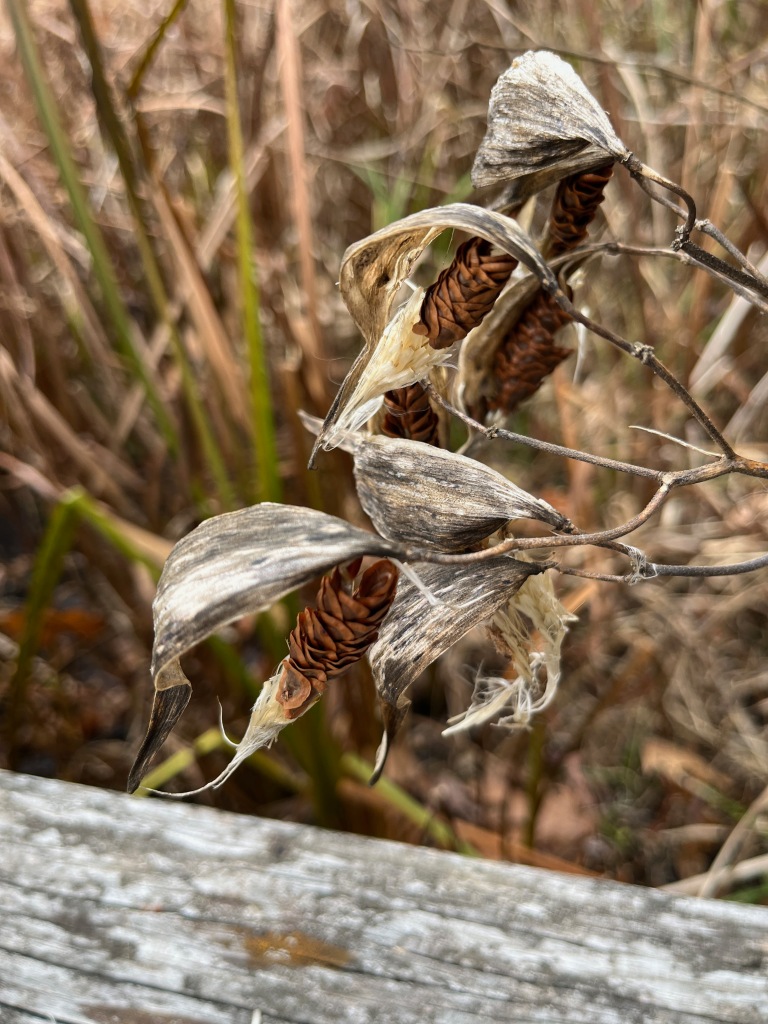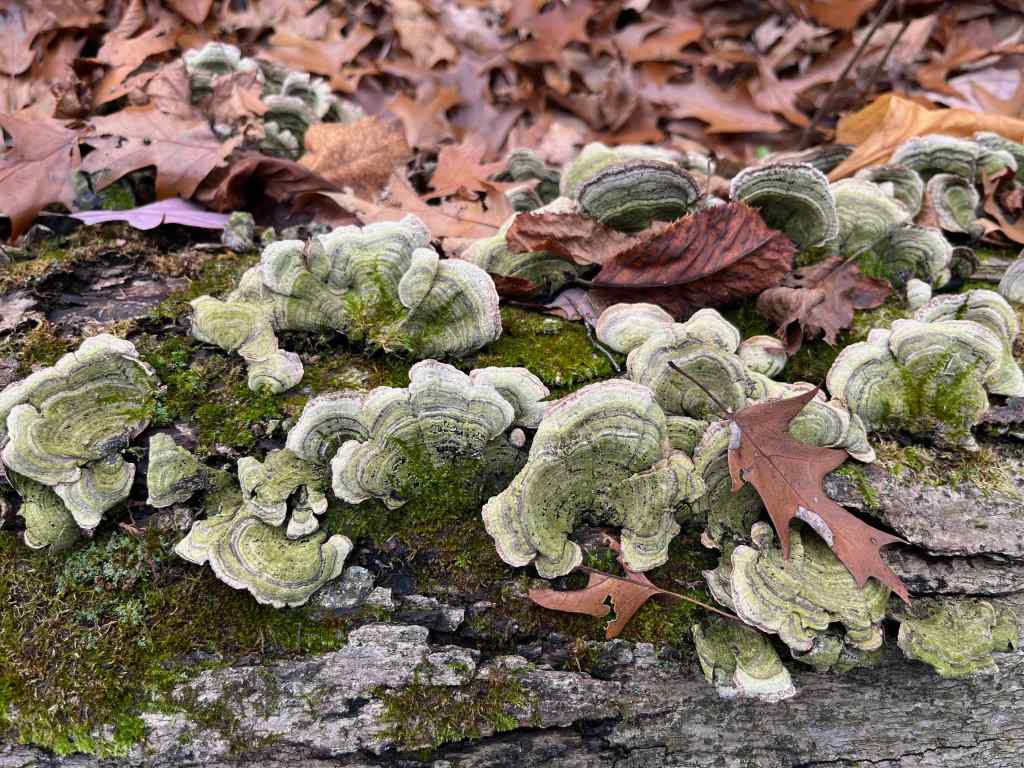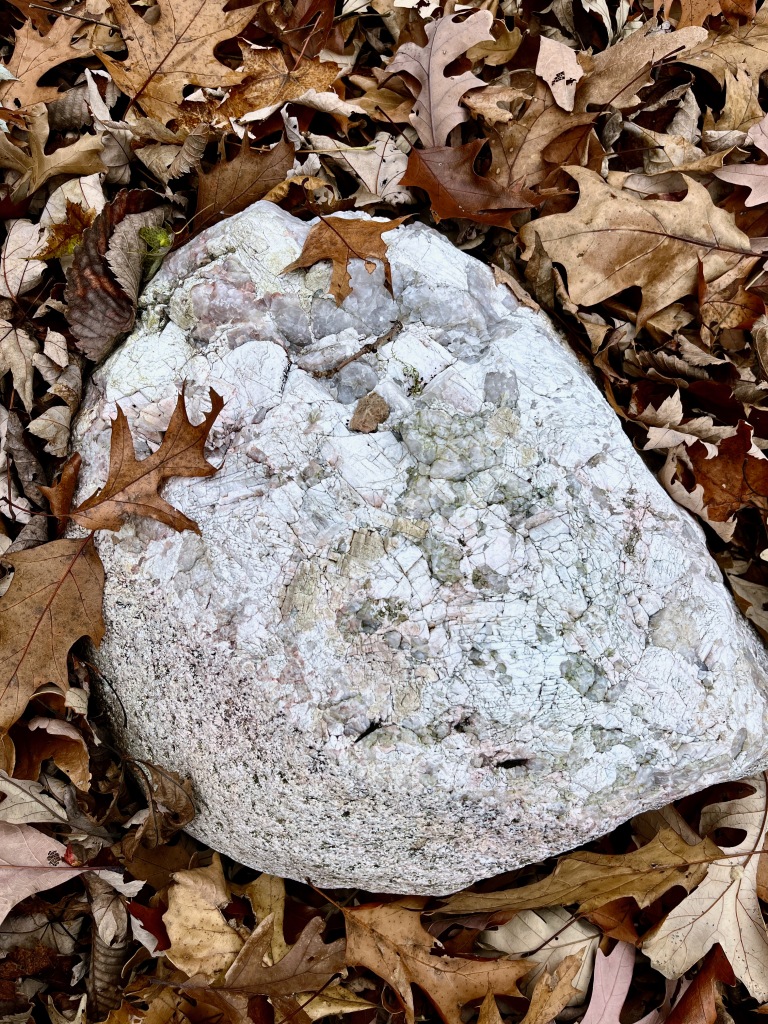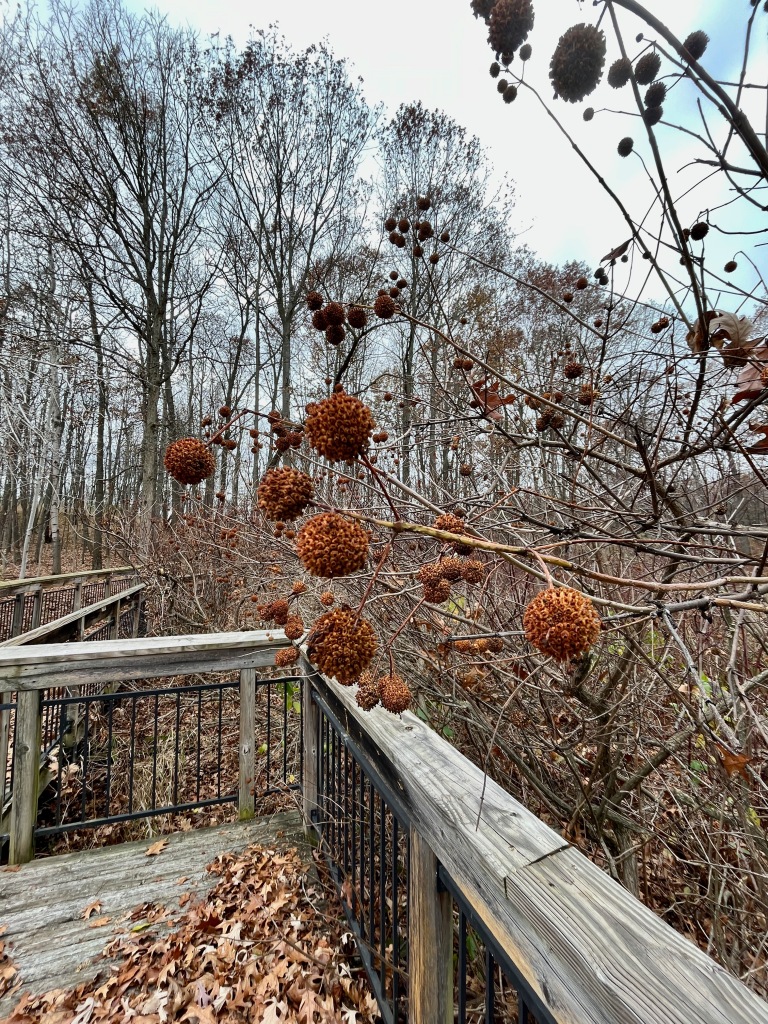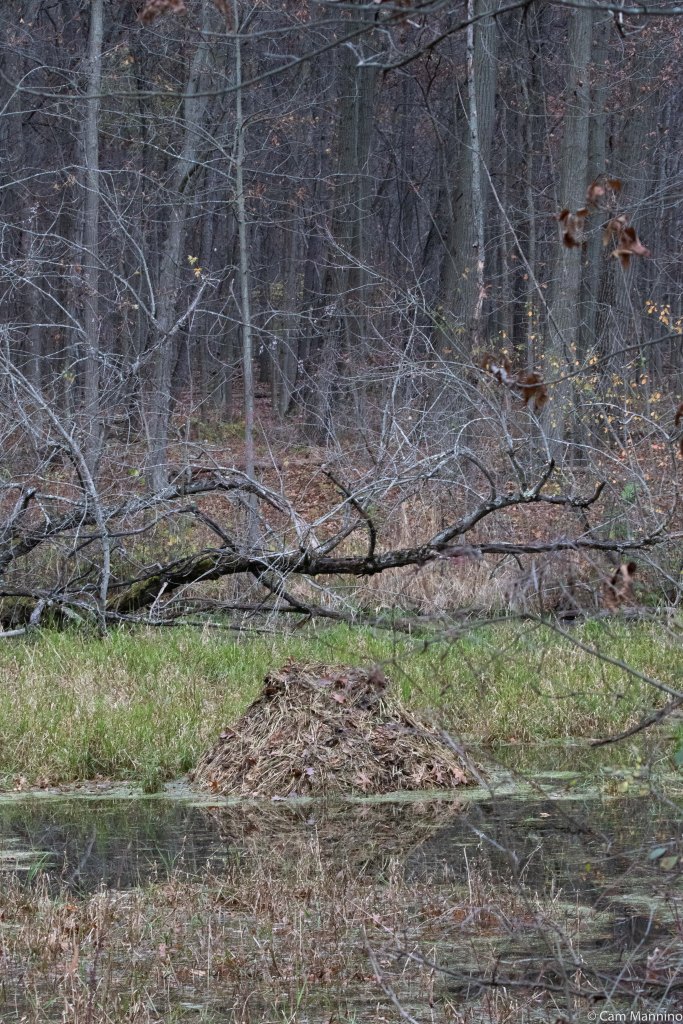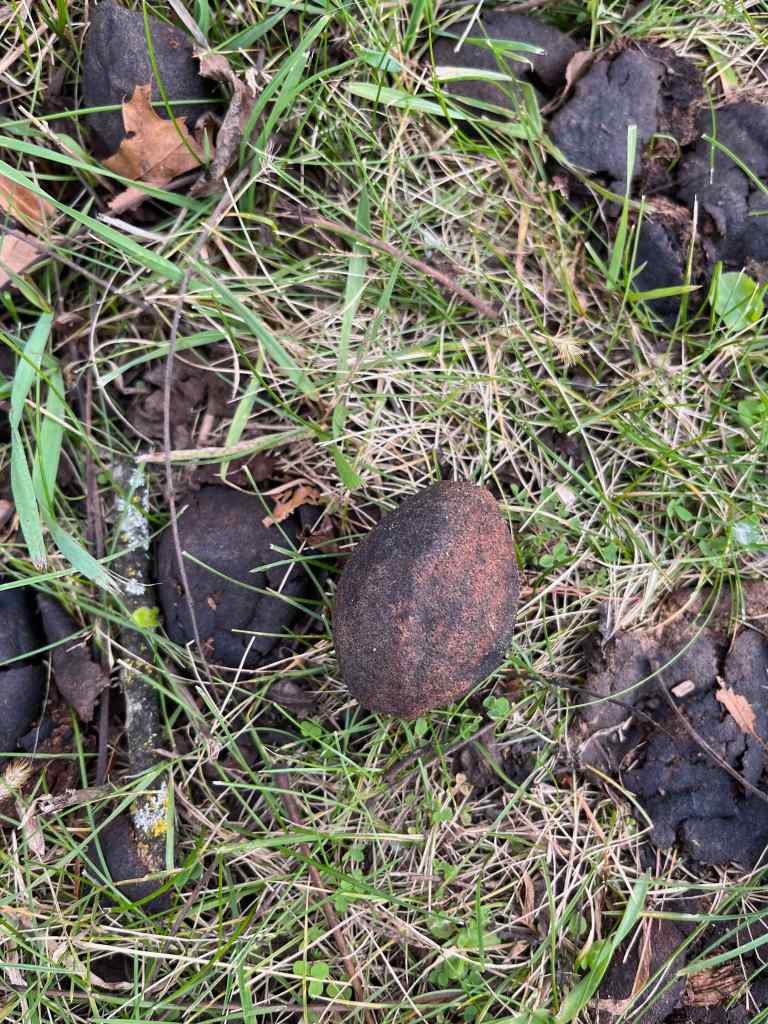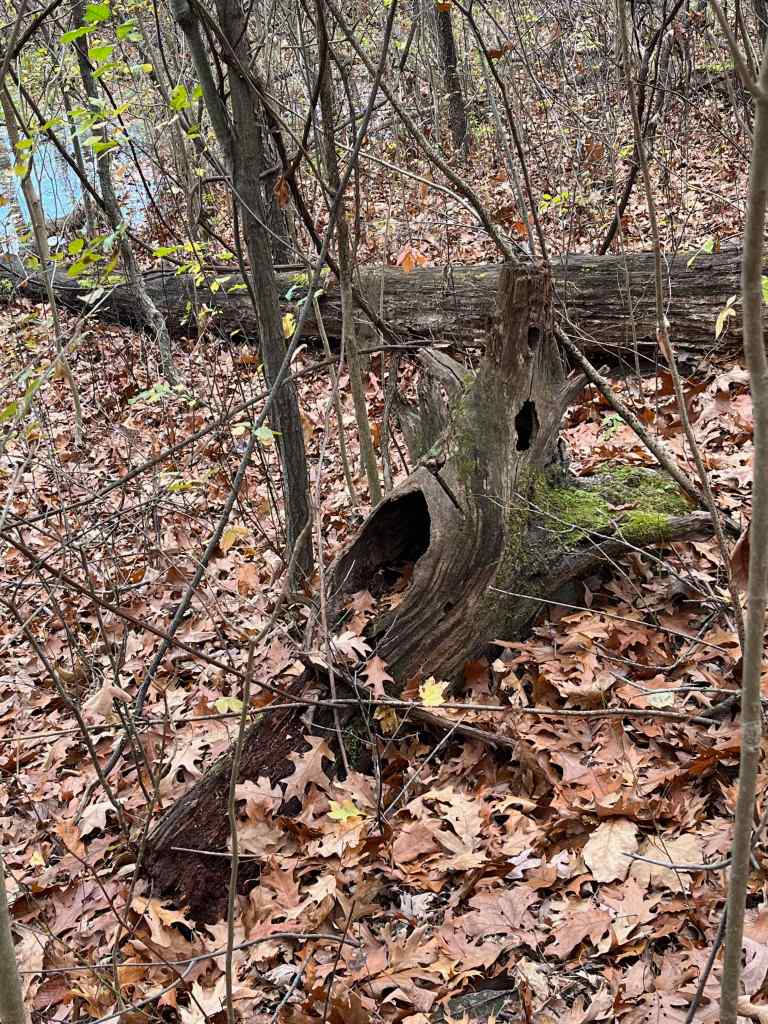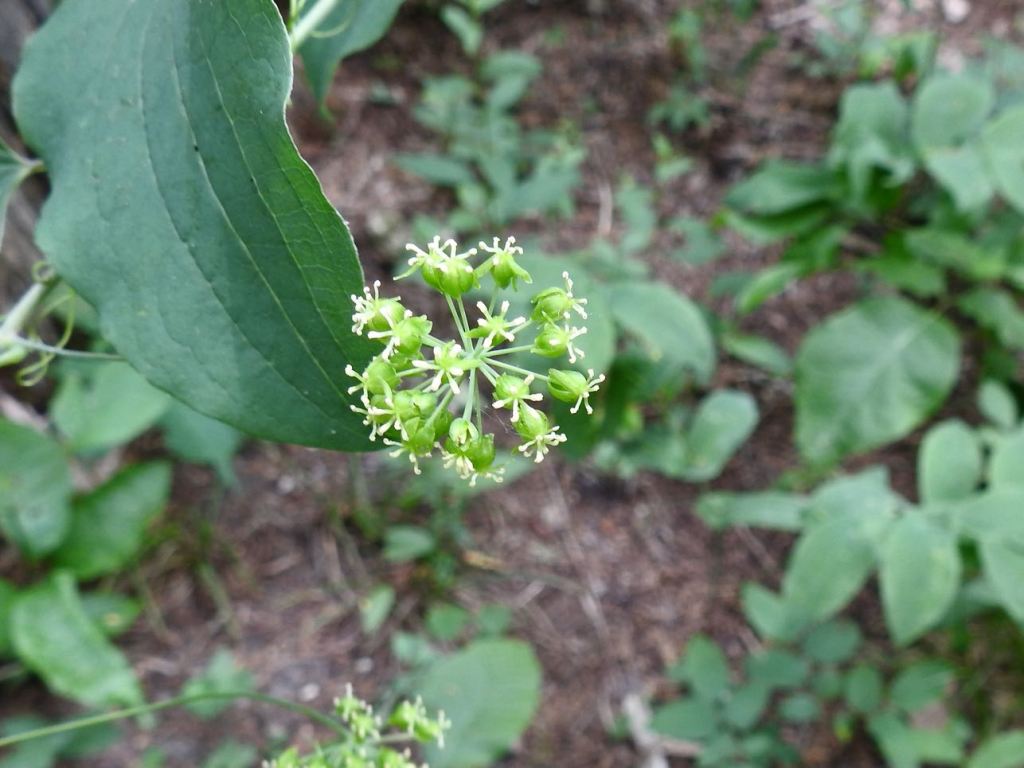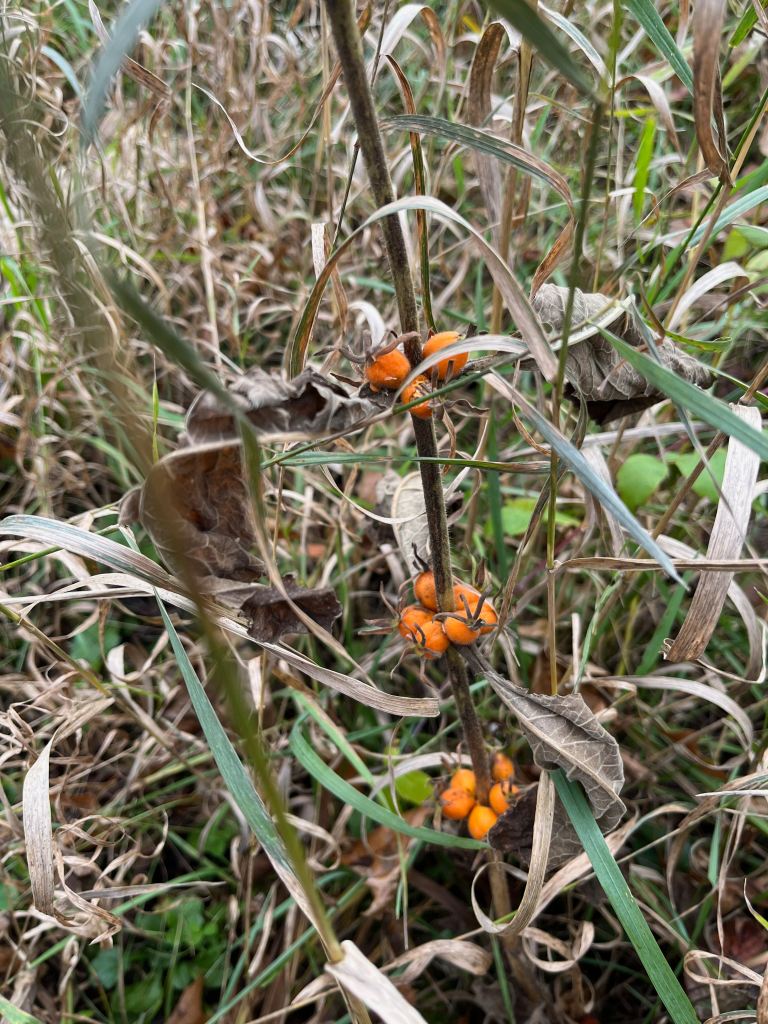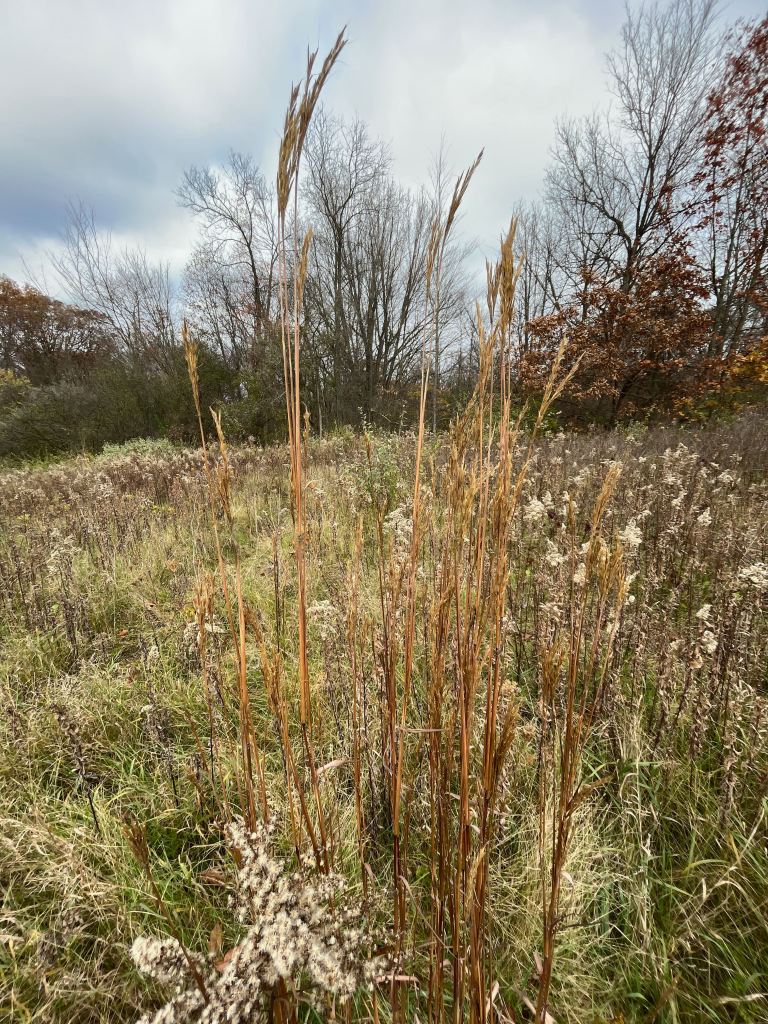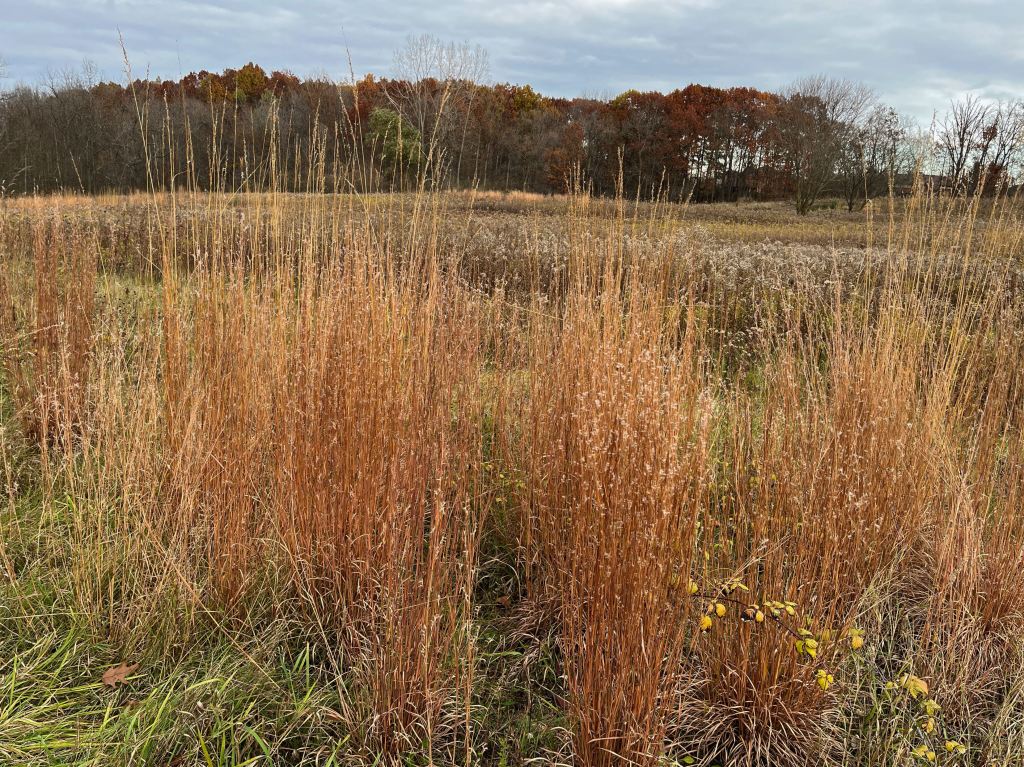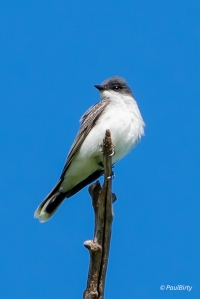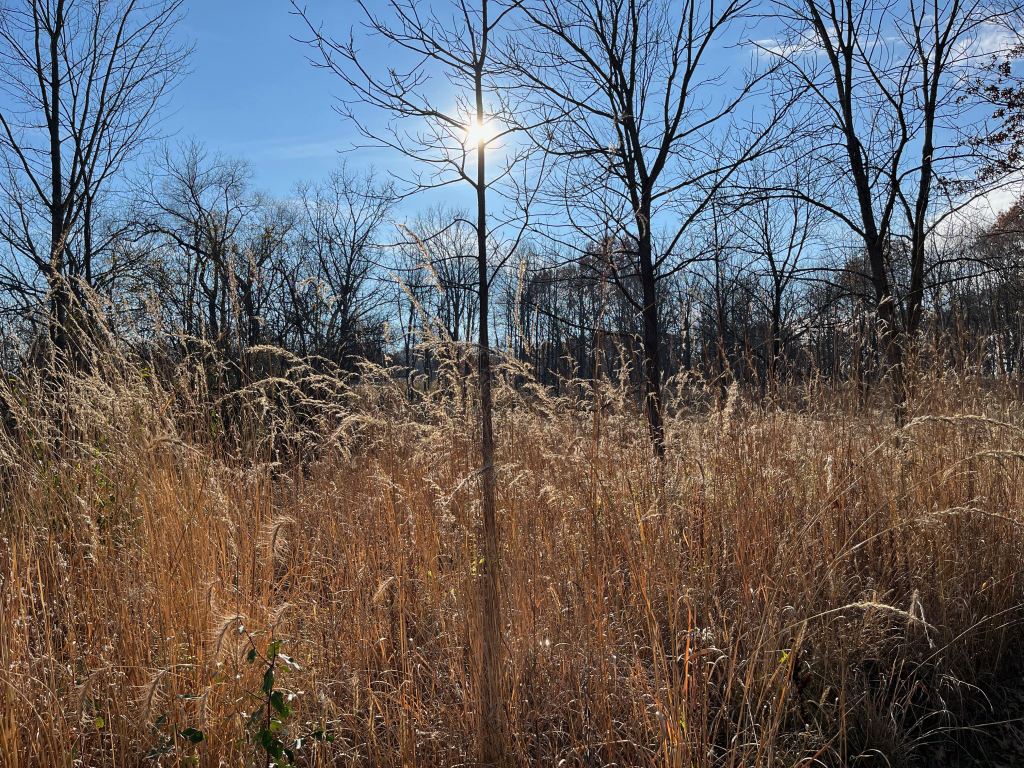
After a crazy three months of other activities – some wonderfully educational, some painfully so – I’m back in the parks and ready to write! Since my August blog about Charles Ilsley Park, I’ve been steeped in nature in new ways – an in-depth, 7-week immersion in studying Michigan’s natural areas through the Conservation Stewards Program , a course designed for volunteers by MSU Extension and Michigan Natural Features Inventory.
And I created and presented a Powerpoint presentation (a first for me!) on prairie restoration for the Rochester Garden Club. Both taught me a lot. Unfortunately, I also got immersed in a patch of poison ivy which for weeks now has been stridently reminding me to be more careful when kneeling in meadows!
But here I am, ready to go. I missed most of the fall migration but luckily, my photographer friends, Paul Birtwhistle and Bob Bonin, have generously shared some of their wonderful photos of birds departing to the south and arriving from the north so I could share them with you.
And when the snow fell in early November, I got inspired to document some of the seasonal and stewardship changes at Bear Creek Nature Park. So please join me as I explore the transition from early to late fall and other changes going on in this busy 107 acre park. I’ve missed your company!
AVIAN SOJOURNERS ENJOY A BIT OF “R &R” AT BEAR CREEK
While I was “otherwise engaged,” my friend Paul Birtwhistle and his faithful dog, Stanley, spent many mornings at Bear Creek. Watch the seasons slowly change in Paul’s wonderful photos!
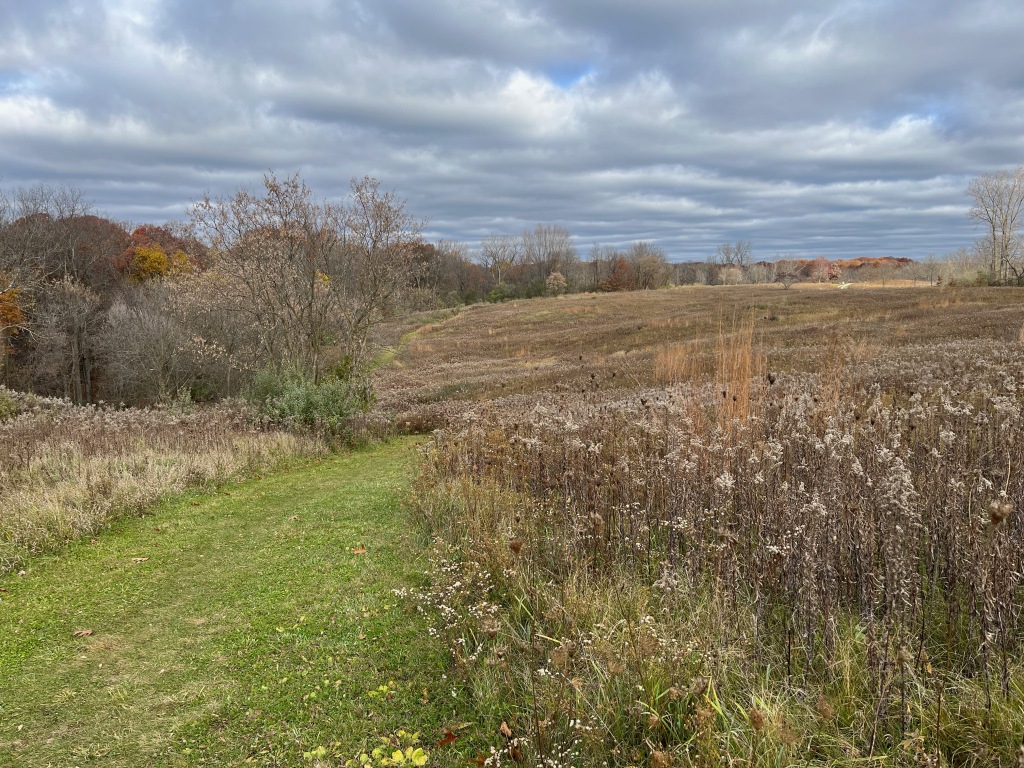
SEPTEMBER: An Assortment of Amazing Migrators, Some Late Season Molts and a Whole Passel of Basking Turtles
Like me, Paul frequently finds birds hopping about at the woodland edge of the Western Slope of Bear Creek Nature Park. Forest edges with wetlands nearby were evidently a big draw for migrators this fall, including some unusual ones!
Meet the Sedge Wren (Cistothorus platensis) who may have raised young here this summer without being seen because it spends time down amongst sedges and grasses. Or it may have bred farther north and just be stopping by on its way to the southeast coast of the U.S. I’m glad Paul spotted it because it’s not terribly common and I’d never seen one before!
The Cornell Lab of Ornithology describes its nest as “a round globular ball woven of sedges and grasses, with a small entrance on the side.” See John Audubon’s image of the nest in this two-part slideshow. I hope I eventually come upon one of those nests in the grassy meadow of one of our parks, as well as its inhabitants!
Paul saw another bird that’s not a “regular” at this park, the Blue-headed Vireo (Vireo solitarius). This little bird spends its summer high in the canopy farther north, at the “tip of the mitten,” or in the Upper Peninsula. With vireos, it helps to hear their song and then look for them high above you. But Paul spotted this one in the Western Meadow, perhaps having a little rest before its trip to Florida or the Gulf coast.

That same moist meadow edge hosted a Black-throated Green Warbler (Setophaga virens) making its migration to the Caribbean. I love its wide-awake, curious posture in Paul’s photo (left below). I’ve only gotten a good look at them during spring migration when the male’s black throat is much more dramatic (right below).
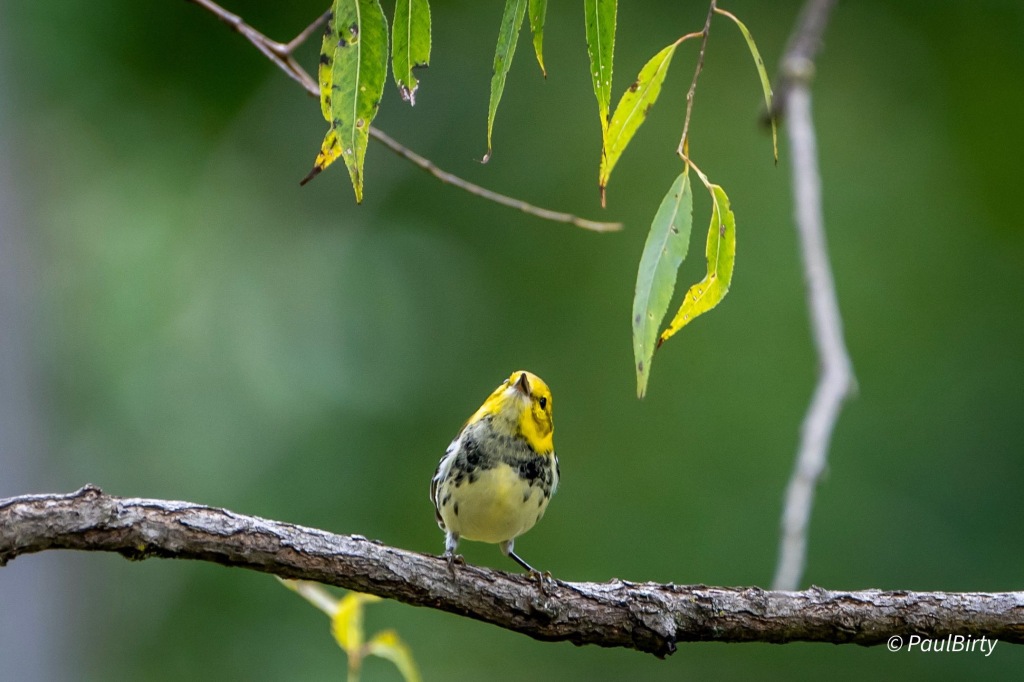
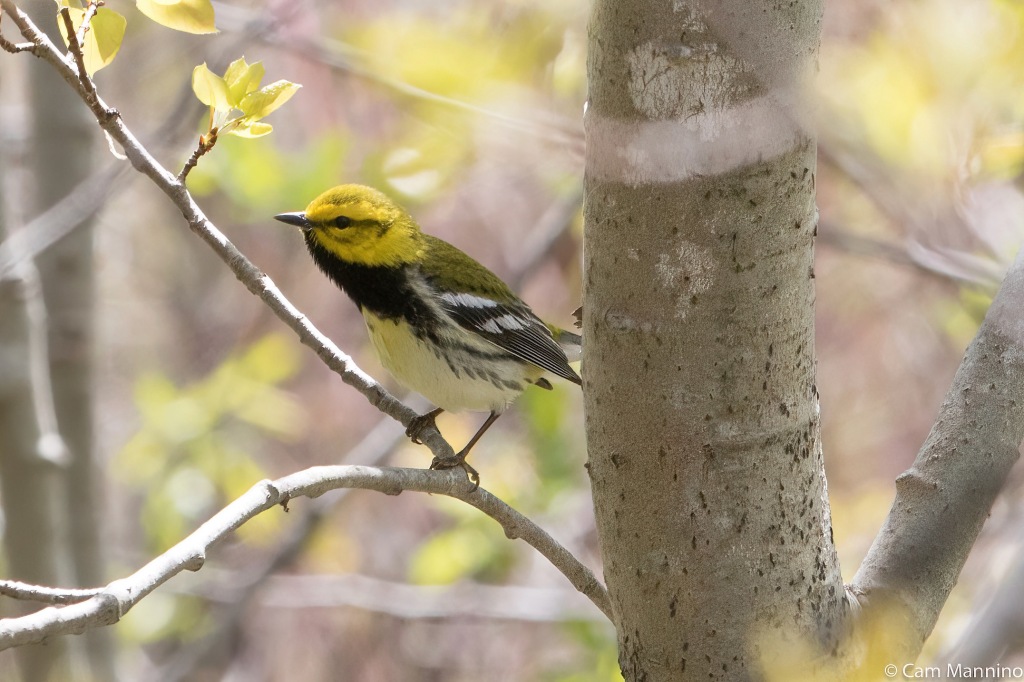
Likewise, the Magnolia Warbler male (Setophaga magnolia) looks decidedly more sedate in September when Paul saw him than he did when I saw one at a distance at Cranberry Lake Park in 2018. I guess his spring “necklace” and black mask must be too flashy for wintering in the Caribbean …?
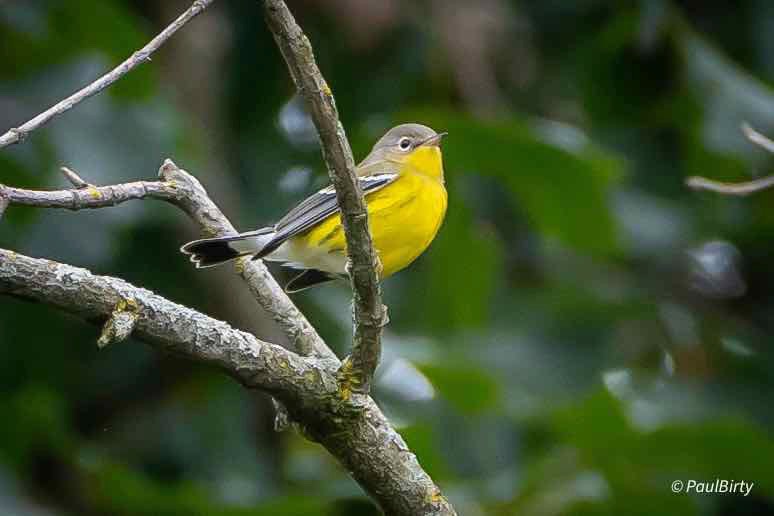

In September, Paul also caught a couple of uncomfortable-looking birds during their molt. Birds that molt in the fall are replacing the feathers damaged over the summer before taking on the strains of migration. I thought perhaps that was the case with the two birds below. But experienced naturalist and bird bander, Allen Chartier, told me that Paul caught a pair of youngsters molting into their grown-up plumage.
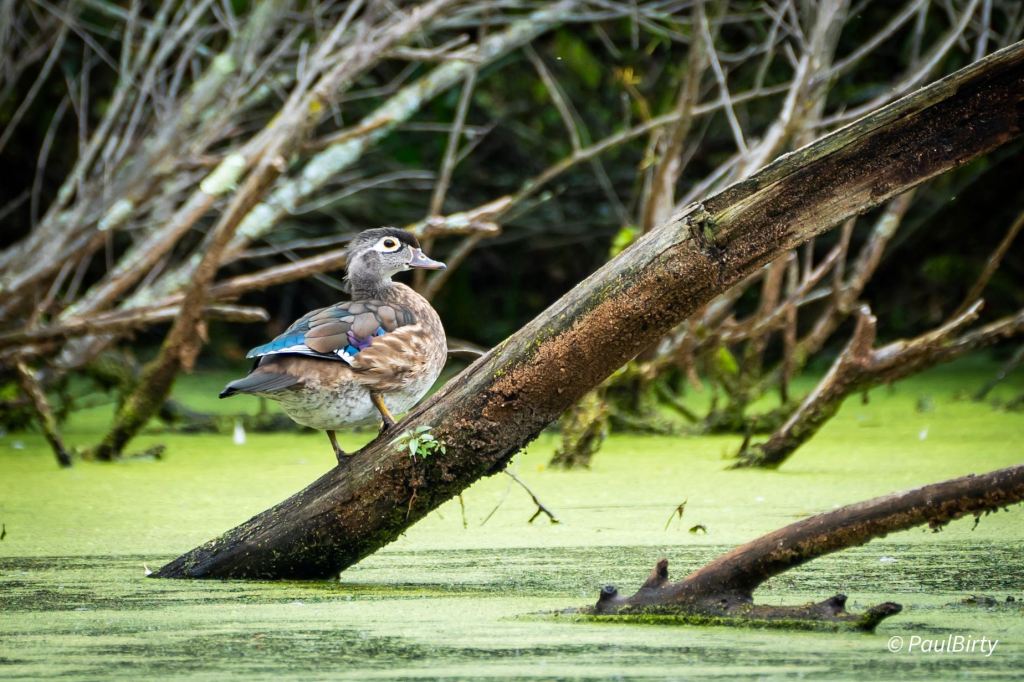
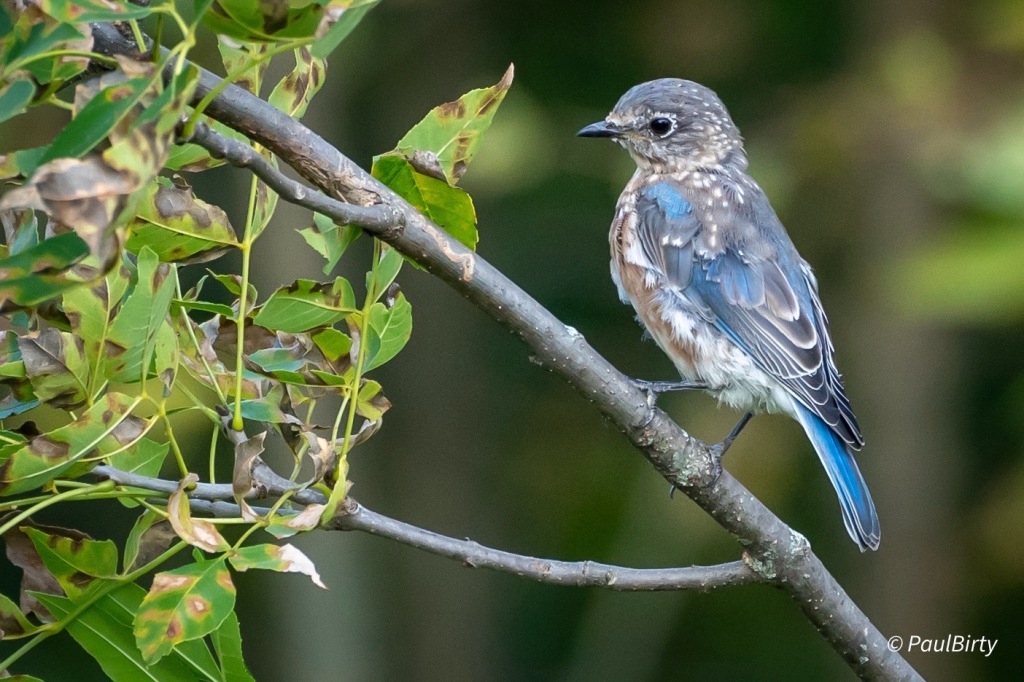
Up at the southern Outlook Point, Paul found this American Goldfinch (Spinus tristis) feasting on the large seed heads of native Prairie Dock (Silphium terebinthinaceum). Birds just love the seeds of these tall flowering plants with their giant, sandpapery leaves!

The Center Pond hosted an unusually large contingent of Midland Painted Turtles in September. It’s fun to see these reptilian sunbathers enjoy a bit of warmth on a fall day.

Paul saw lots more. I’m just choosing some of my favorites to give you some highlights of each month of the season. So, on to …
OCTOBER: The Leaves Turn as Migrators Keep Heading South and One Little Predator Still Stalks the Marsh
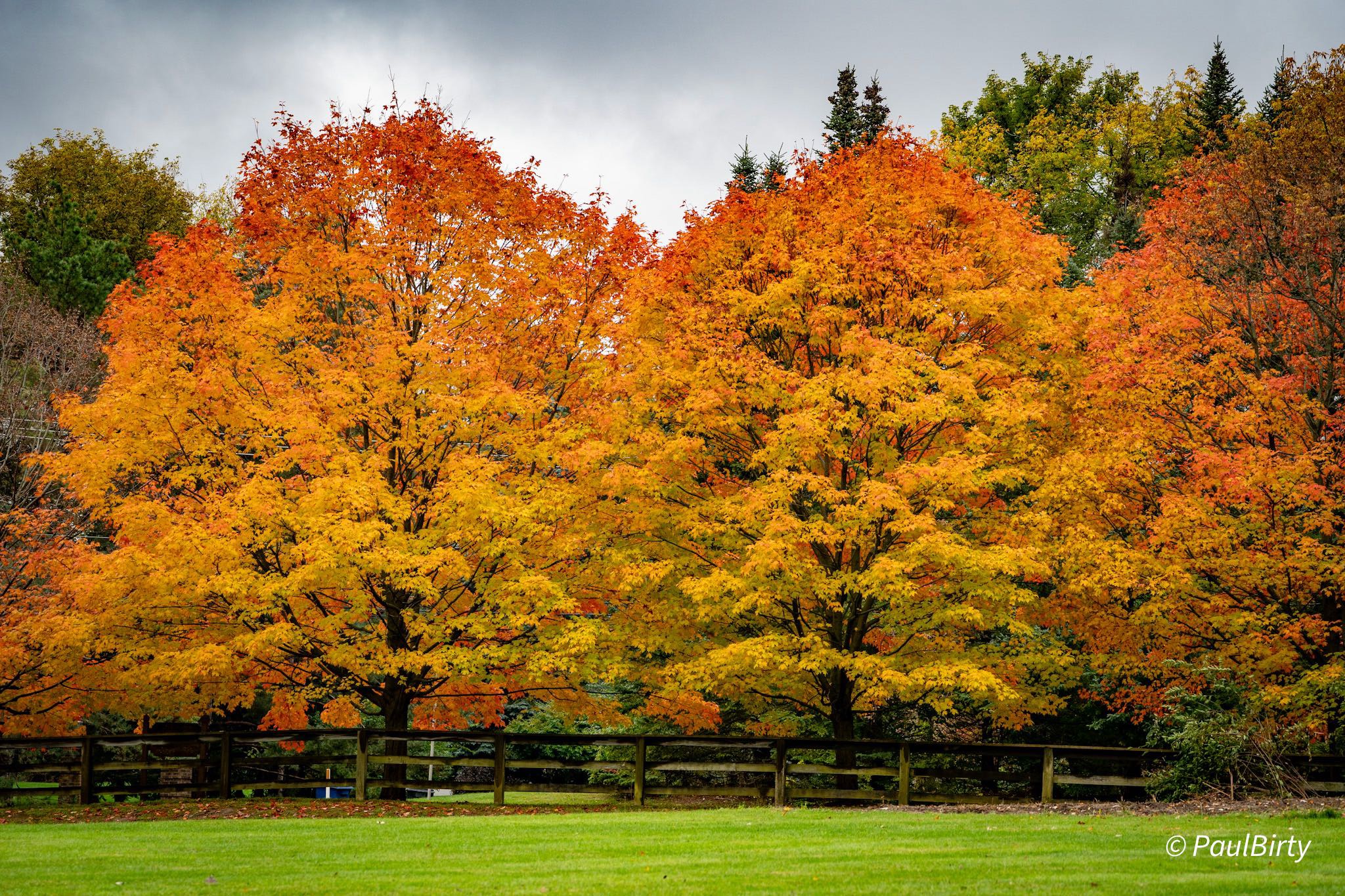
Fall always brings berries which the birds, of course, can’t resist. Once the generally more nutritious native berries of our native shrubs finish for the season, however, birds are seduced by the sugars of non-native shrubs, like Tartarian Honeysuckle (Lonicera tatarica) whose seeds are then spread far and wide in bird poop. These invasive Eurasian shrubs can create monocultures by releasing chemicals into the soil that suppress any plants trying to grow around them. I tend to think of such berries as junk food for birds and the seeds as toxic litter. But the resident Cedar Waxwing (Bombycilla cedrorum) wanted berries and it appears that its offspring was watching carefully. See both in the short slideshow below.
The park was still bustling with migrators in October, of course. Paul came across the tiny (smaller than a Chickadee!) Ruby-crowned Kinglet (Corthylio calendula) bouncing from limb to limb in the trees along the Western Slope and later clinging to a reed in the Bear Creek marsh. The little red spot on the male’s head (right photo) rears up into a scarlet crest when he’s agitated! (Click on photos to enlarge.)
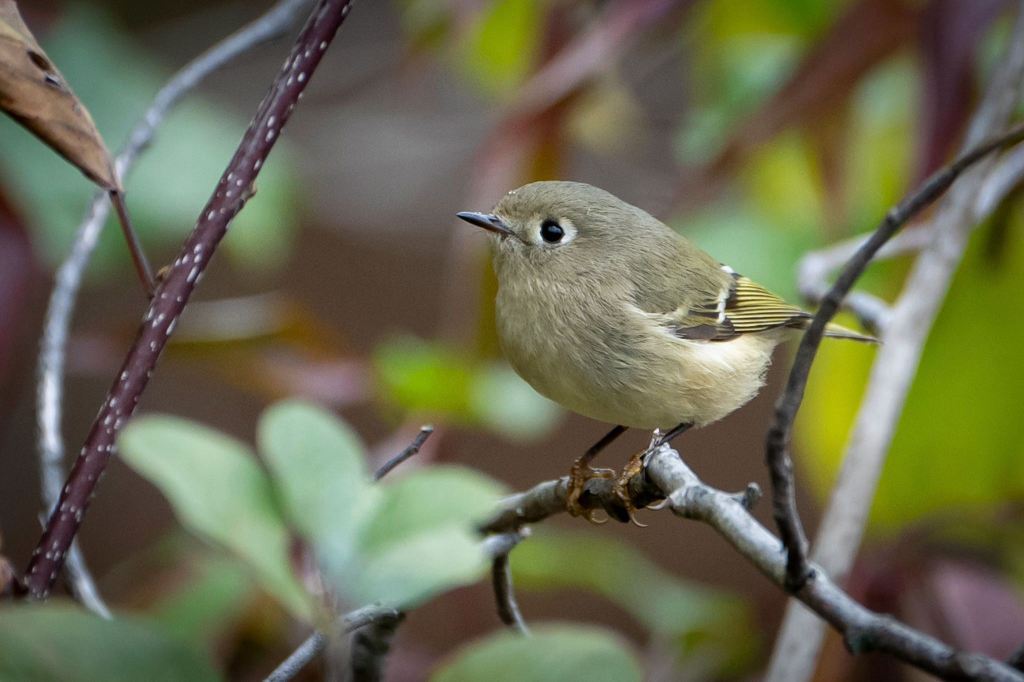

Oh, about that predator. While at the marsh, Paul also saw a Chinese Praying Mantis (Tenodera sinensis). It’s non-native but not invasive, according to Michigan State Extension. The mating season for Praying Mantids (the plural form of mantis) is August to October. So this one Paul discovered on October 26 may have been displaying for a mate rather than waiting in ambush for some unsuspecting insect. Mantids eat some beneficial native insects (including bees!), but research is still ongoing concerning how much harm they cause. Here’s the charmer that Paul came across. Love those wily green eyeballs and the striped face!

Two species of migrating sparrows grace the park each year. Both breed in Canada; the White-crowned Sparrow (left) can even breed on the tundra in the far north. In the fall, the White-crowned often travels in flocks that scurry from bush to bush. At first, it took me a while to quickly discern the differences between it and the White-throated Sparrow which Paul also saw in October (right). Have a look; I compare them in the captions.
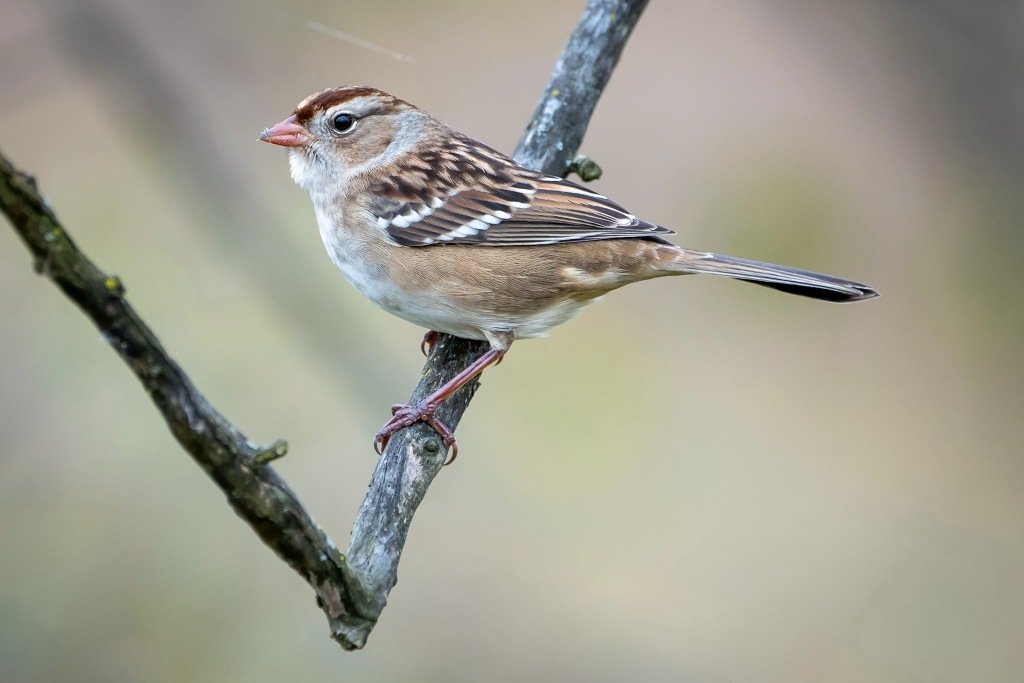
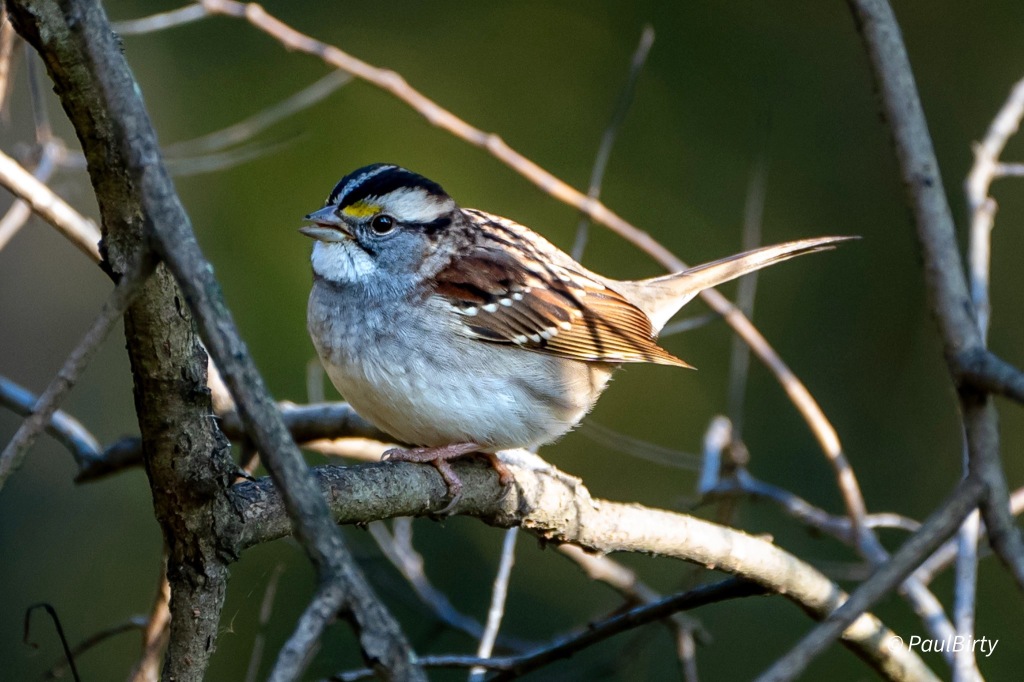
October also brought a few other travelers. The Palm Warbler (Setophaga palmarum) on the left below passes through each spring and fall on its way to or from the boreal forests in northern Canada. According to Audubon, some of those forests, referred to as “North America’s bird nursery,” burned in the monster wildfires this summer. They don’t yet know the extent of the damage to birds and their habitat. The Hermit Thrush (Catharus guttatus, right) also spends its summer in Canada’s forests. I learned from the Cornell Lab of Ornithology’s website, Allaboutbirds.org, that when foraging, Hermit Thrushes will sometimes jiggle their feet on the soil (Cornell calls it “foot quivering”) in order to drive insects up from underground. Here’s a Youtube video of one doing it!

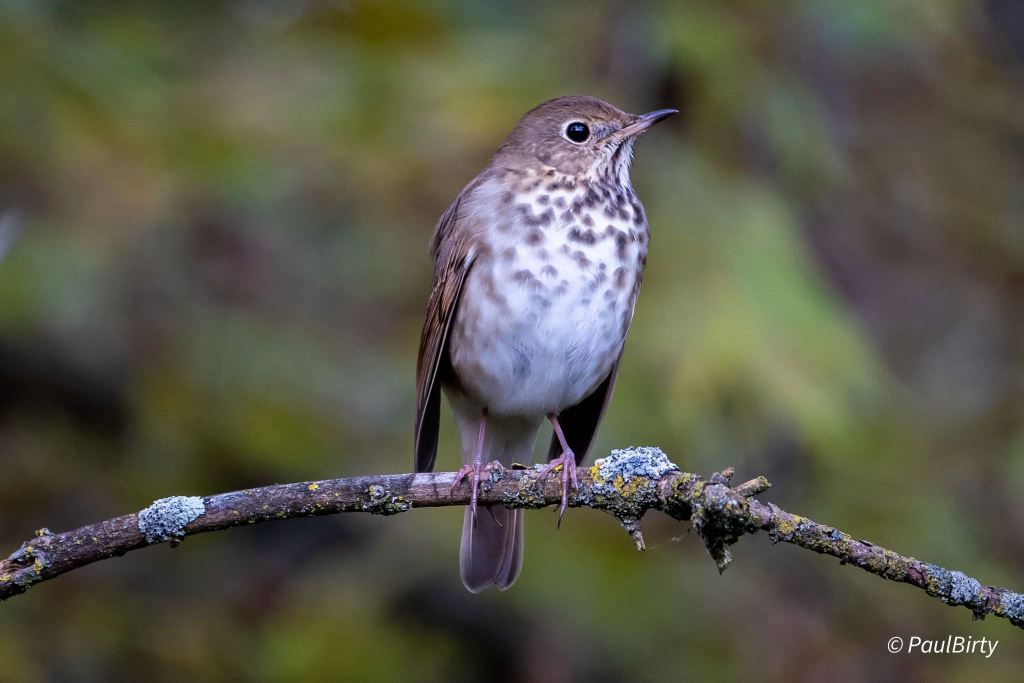
On October 31, the Western Slopes hosted the Golden-crowned Kinglet (Regulus satrapa). This tiny bird, a wee bit larger than a hummingbird, can survive -40 degree winters, sometimes by crowding into a nest with fellow Golden-crowns. They also breed in Canada, Cornell Lab of Ornithology informs us, but are “slowly spreading their breeding range southward” and currently spend their winters all over the United States. For a great photo of that yellow and orange crest thrust outward in all its glory, click through the photo section for this little bird at the Cornell website. Paul caught the one below in a less frenetic moment. Look at those orange feet! Such detail in this photo!
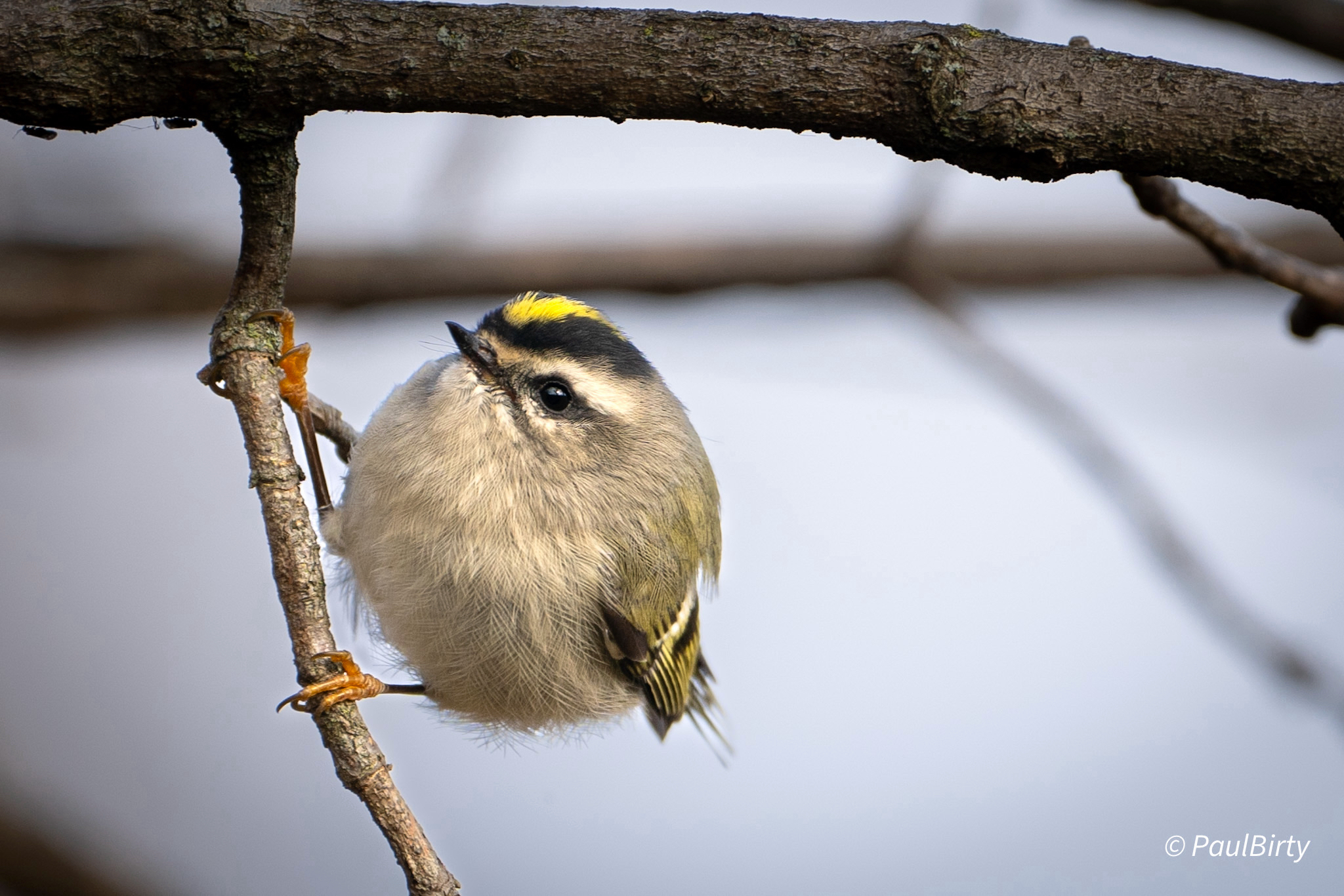
On October 31, as if teasing us humans before Thanksgiving, a gaggle of Wild Turkeys (Meleagris gallopavo) strolled calmly past Paul, headed for the Western Slope. Wild turkeys, with their bobbing heads and wobbling wattles, always make me smile. According to Cornell Lab of Ornithology, fossils of these big native birds date back five million years in the southern US and Mexico. Due to dwindling numbers, in the 1940s, game hunters transported these birds to other states and they now have spread to all of the Lower 48 and Canada.

November: And Then Came the First Snow

A first snow still holds magic for me. Walking into the park with my fellow birders in November, I was delighted with the bright blue sky and white snow framing our view of the last autumn color. We weren’t confident about finding many birds, but as you’ll see in the photos below by Paul and my other photographer friend, Bob Bonin, they were out and about!
Just as the birding group gathered to begin our hike, a large bird streaked past us overhead. A few sharp-eyed members of the group spotted the signs that it was a Brown Thrasher (Toxostoma rufum). The yellow eye, long tail, curved beak, reddish brown color and black-and-white wingbars seem to be the distinguishing field marks. No one got a photo as it shot out of the woods and zoomed over the playground so here’s one I saw defending its young at Draper Twin Lake Park five years ago.
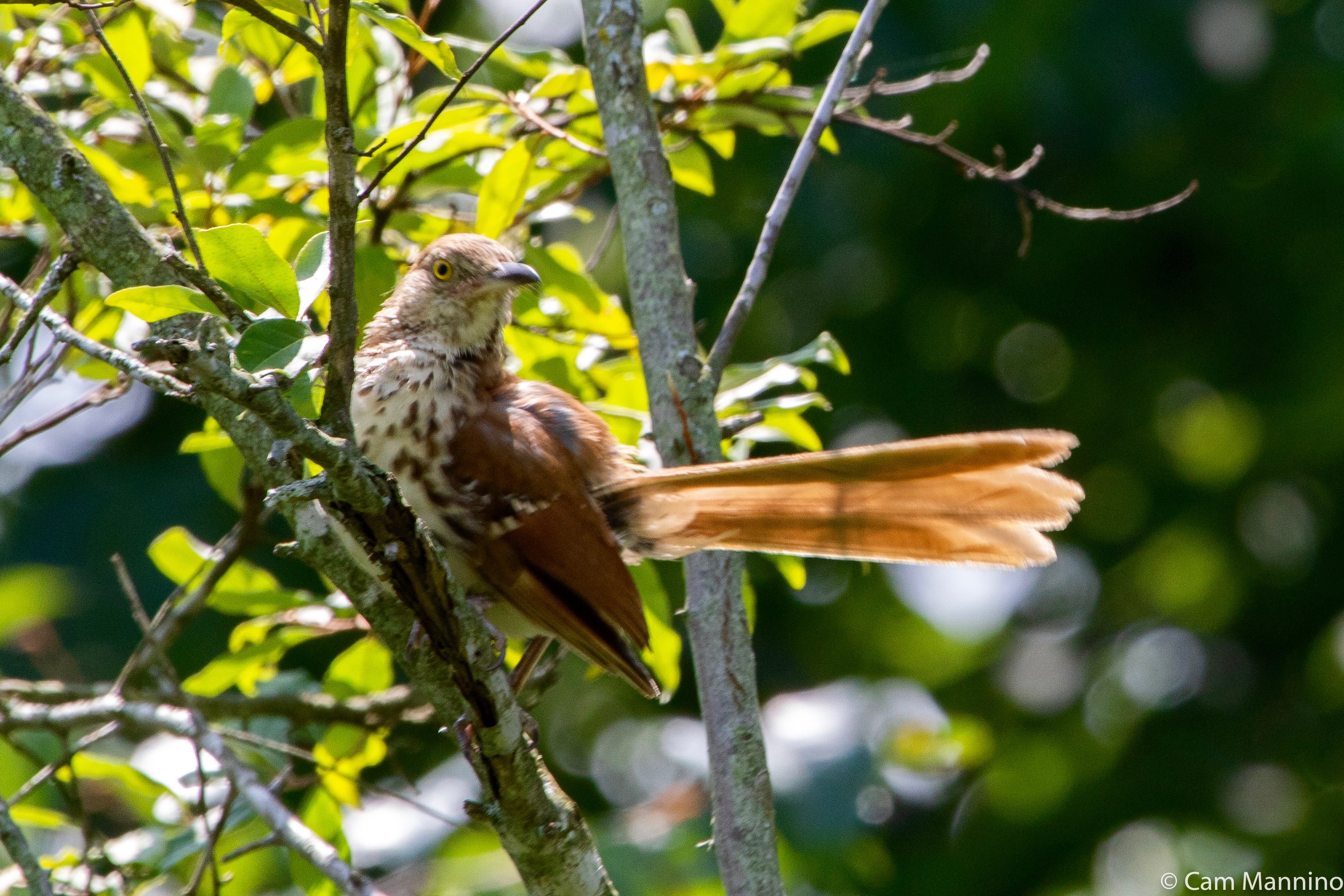
West of the Walnut Lane, photographer and fellow birder, Bob Bonin got a quick shot of a juvenile Sharp-shinned Hawk (Accipiter striatus).
Sharp-shinneds are tiny hawks and this one seemed to be scanning the meadow for its prey, which generally consists of small birds, but also rodents. Since the birders saw this one close to the ground, it was probably scouting for mice or voles. Juveniles have those yellow eyes; adults’ eyes are red. Quite a stare, eh? Be glad you’re not a vole!

As we rounded the Center Pond that snowy day, Bob spotted an American Goldfinch (Spinus tristis) and a pair of Dark-eyed Juncos (Junco hyemalis) foraging along the shoreline. The Juncos had recently arrived from their breeding grounds in Canada. Both of these species are seed-eaters in the winter, but the Goldfinches are vegetarians year ’round.
Of course Mallards (Anas platyrhynchos) were plying the ponds for aquatic vegetation. I caught a pair on the Center Pond playing “Up Tails All!” as Kenneth Graham described it in the children’s classic, The Wind in the Willows. And Paul saw some at the Playground Pond scooting along with open beaks slurping up the plant named after them, Common Duckweed (Lemna minor), and Watermeal (Wolffia columbiana).
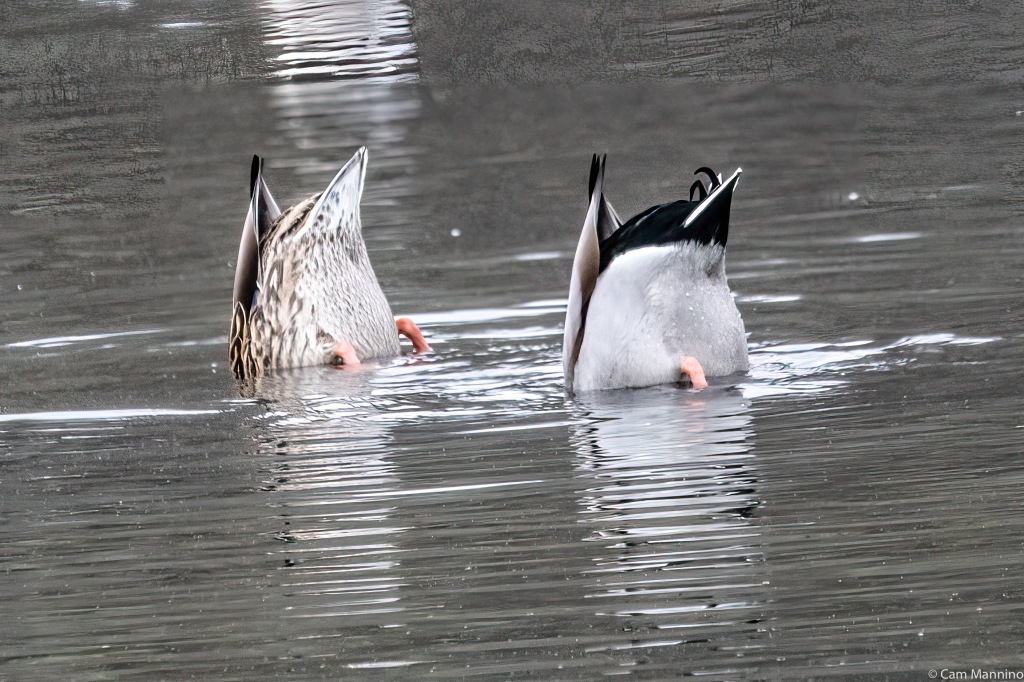
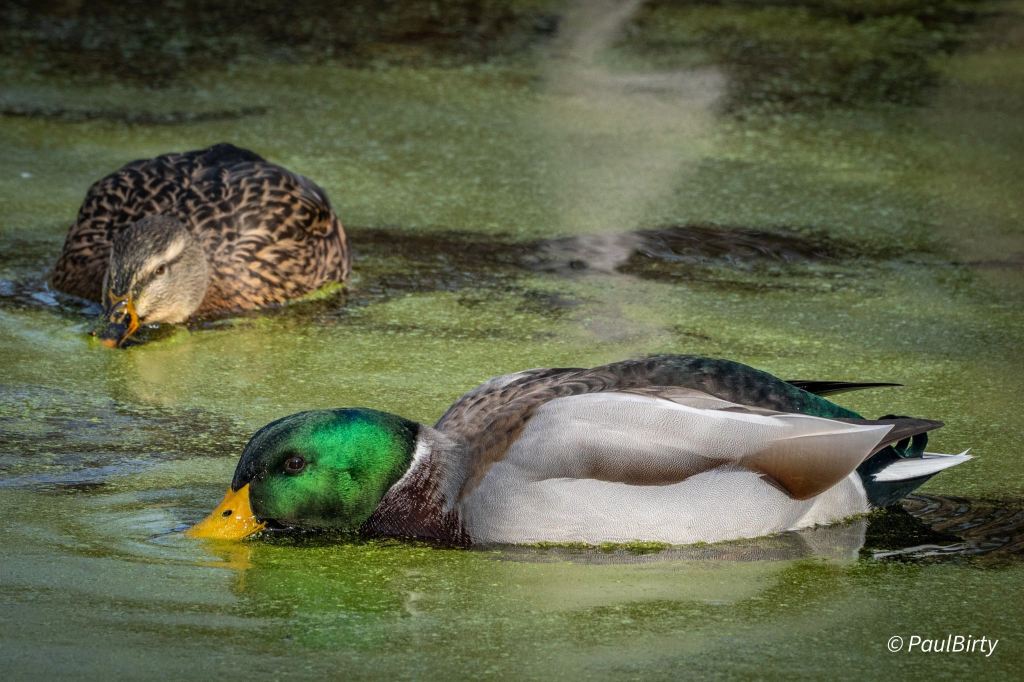
Near the pond, a Turkey Vulture soared high overhead. Vultures’ huge wings can keep them in the air riding on thermal updrafts for hours with only periodic wingbeats. According to a New York Times article , Dr. Kendall, a turkey vulture expert, a “high-flying turkey vulture can detect a single odor molecule wafting up from old meat.” They’re heading south to Florida and Georgia for the winter.
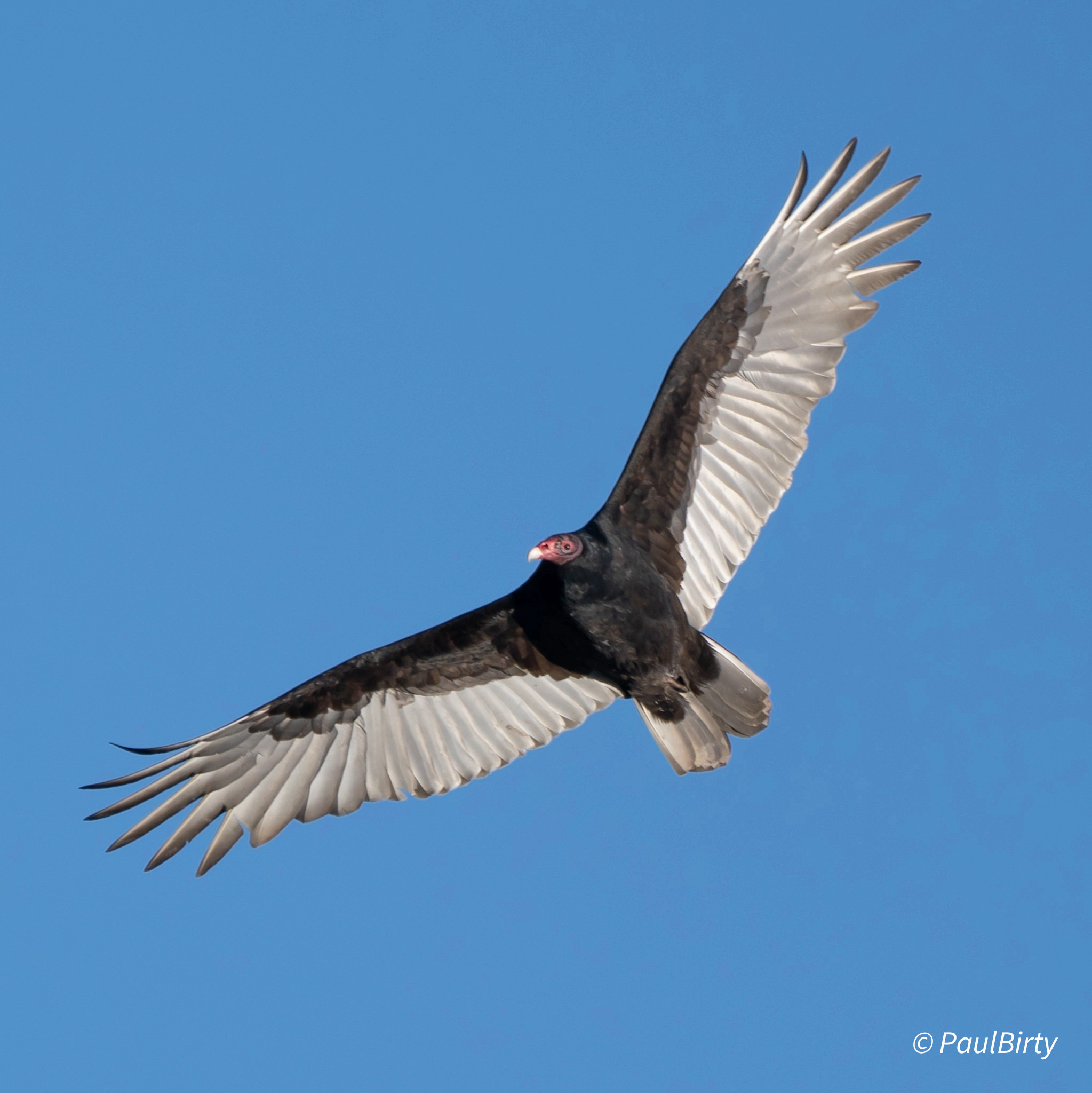
In mid-November, a juvenile Cooper’s Hawk settled onto a branch near the Center Pond. Note its yellow eyes; like the Sharp-shinned Hawk, juvenile Cooper’s Hawks have yellow eyes that change to red/brown when they mature. Paul’s camera caught a whole set of gyrations! I’ve had fun clicking through the photos in succession so I can imagine seeing what Paul saw. If you like, you can try it with the slideshow below. The spread tail feathers at the end look like a dramatic finale to the show, but are a common behavior for Cooper’s when their tails get wet, according to Cornell Ornithology’s subscription website, Birds of the World.
Later in November, Paul spotted a migrator who finds winters in Michigan more hospitable than its summer breeding grounds on the arctic tundra! The Cornell Lab of Ornithology’s website beautifully describes how American Tree Sparrows (Spizelloides arborea) spend their winters in our parks: “Hopping up at bent weeds or even beating their wings to dislodge seeds from grass heads, they scratch and peck the ground in small flocks, trading soft, musical twitters.” And of course, watch for these arctic visitors at your bird feeder, too. Despite their common name, don’t look for them much in trees. These winter visitors spend most of their time on or near the ground.

And look who Paul saw posing so elegantly in the woods north of the Center Pond! This male White- Tailed Deer (Odocoileus virginianus) probably had some success with the ladies since “the rut” is on! Drive carefully, especially at night, for the next few months. Bucks are heedlessly single-minded as they charge after a female!

Out near the marsh, Paul spotted a late season insect, an Autumn Meadowhawk (Sympetrum vicinum). They usually fly from late July to early November. This one probably stretched out on a brown oak leaf to soak up some sun on November 11 since they are known for basking to absorb heat. His/her young, called naiads, hatch and winter on the muddy floor of the marsh, snatching other insects before emerging on a spring night to transform into dragonflies.
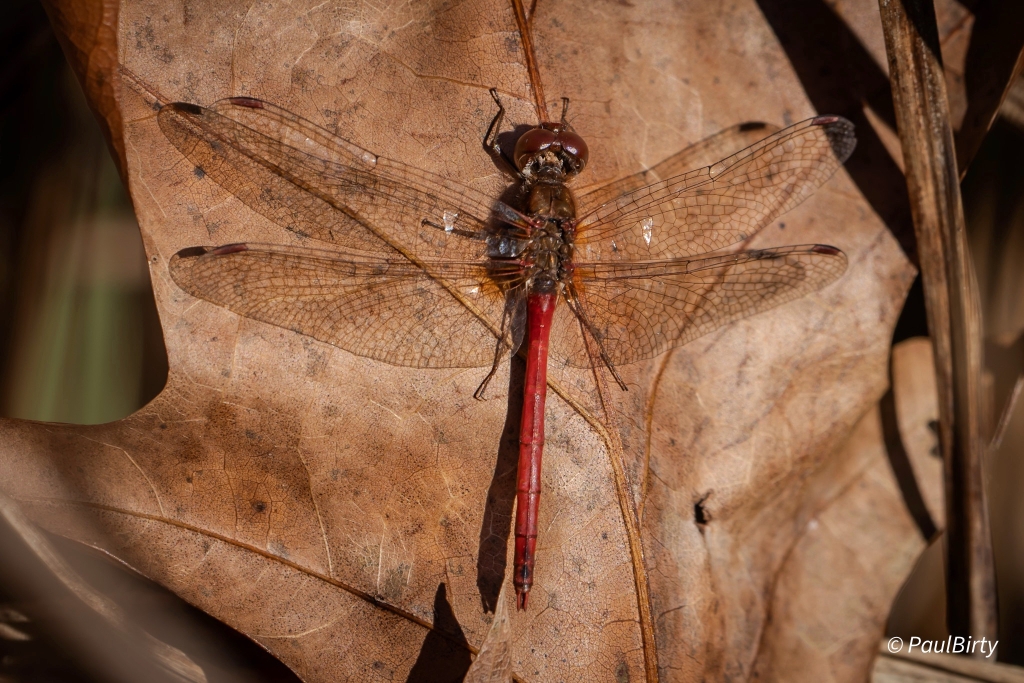
The Autumn Meadowhawk has yellow-orange clouding at the base of each hindwing. The adult (male or female) are red with a brown thorax and head. The thoraxes and abdomens of their young are yellow. Photo by Paul Birtwhistle
My Signs of Late Autumn Were Much More Modest
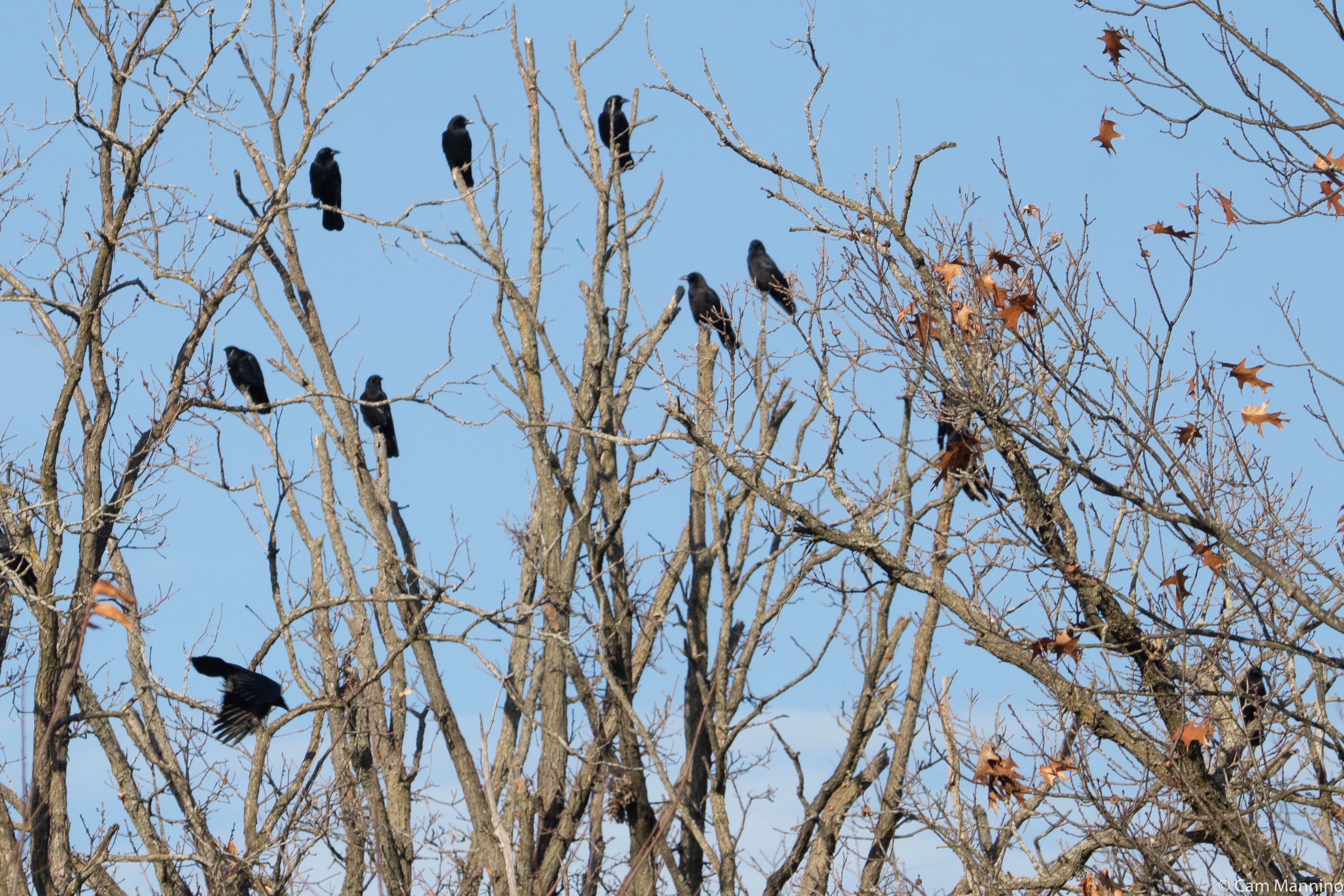
Starting down the path through the Eastern Meadow one afternoon, a large flock of crows darted in and out of trees along the eastern edge, calling loudly to one another. I’ve learned that crows tend to roost together in large numbers during the winter. Cornell’s website states that roosts can be as large as “a few hundred up to two million crows”! I can’t image the din of a million crows! So this raucous bunch may have gathered before joining other groups for the winter. For a closer look at these brilliant, audacious birds, have a look at my earlier blog entitled “The Case for Crows.”
Since my friends covered the birds so beautifully, I decided to just wander to the marsh and through the woods to discover all the small signs of late fall I could. Here’s my slideshow of November’s slightly more humble beauties.
Stewardship Never Stops at Bear Creek Nature Park

A few of the many piles of invasive shrubs and vines cut and ready for burning this winter near Bear Creek Marsh
Dr. Ben VanderWeide, our township Natural Areas Stewardship Manager, Grant Vander Laan, our Stewardship Specialist and dedicated volunteers have been busy this fall. On either side of the viewing deck near Gunn Road, they cleared away thickets of invasive shrubs and vines that ringed the marsh. (Ben refers to these as “bath tub rings!”) As usual the contours of the land emerge like magic after this procedure, though the work is arduous – cutting and piling hundreds of small Glossy Buckthorn shrubs (Frangula alnus) and yards of tangled, prickly Invasive Bittersweet (Celastrus orbiculatus). Then after a November snow, they were set alight, tended by the stewardship staff and more volunteers.
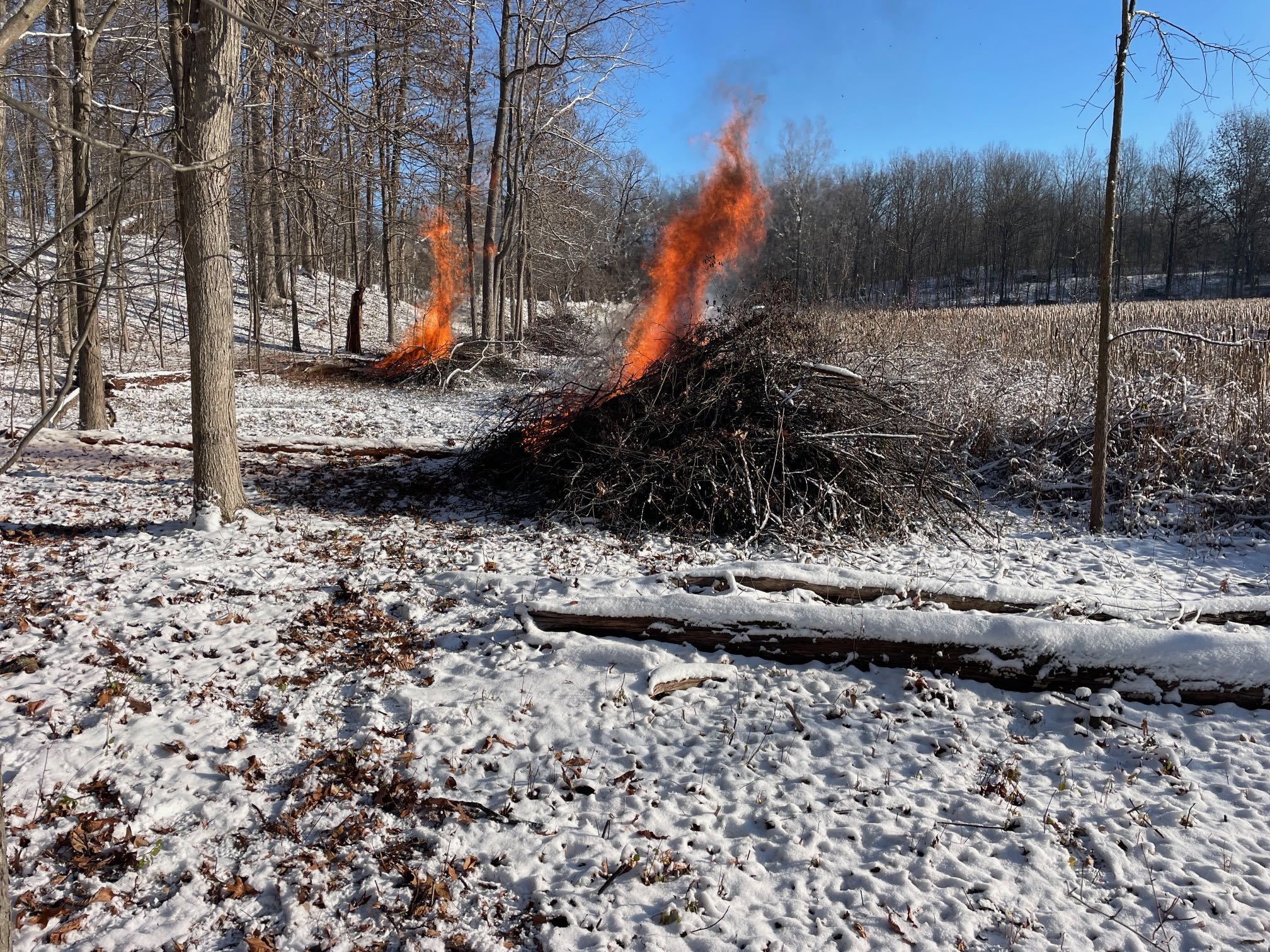
The enormous amount of hand work is definitely worth the effort. Now native plants and shrubs, like Buttonbush and others, can begin to make the habitat more nourishing for all kinds of wildlife! Thanks to everyone that helped!
After years of repeated prescribed fire, invasive shrub removal and seeding, native wildflowers spread into new locations in the park and a variety of native grasses have begun to take hold in several meadows:
You might notice a new data collection point on a pole situated at the southern Overlook Point at Bear Creek Nature Park. One of our dedicated stewardship volunteers put it together this citizen science project for Ben as a capstone project for the Michigan Conservation Stewards Program. The idea is to have park visitors – like you, I hope! – take photos over time of the meadow below to record its changes after restoration work – like prescribed burns, seeding, etc. – or as climate and other natural factors affect the meadow. We place our cellphones on top of the metal bracket at the top left edge of the sign and take a photo. Then, following the instructions on the sign below, we send our photo to the stewardship website via an email or QR code. It’s a way to collect time-and-location-stamped data. As the sign says, the photos will be used to create a time-lapse view of our township’s ecosystem recovery work. These data posts are sited at Draper Twin Lake Park and Charles Ilsley Park as well as Bear Creek. I hope you’ll give it a try – and keep taking photos on future visits whenever you notice a change !
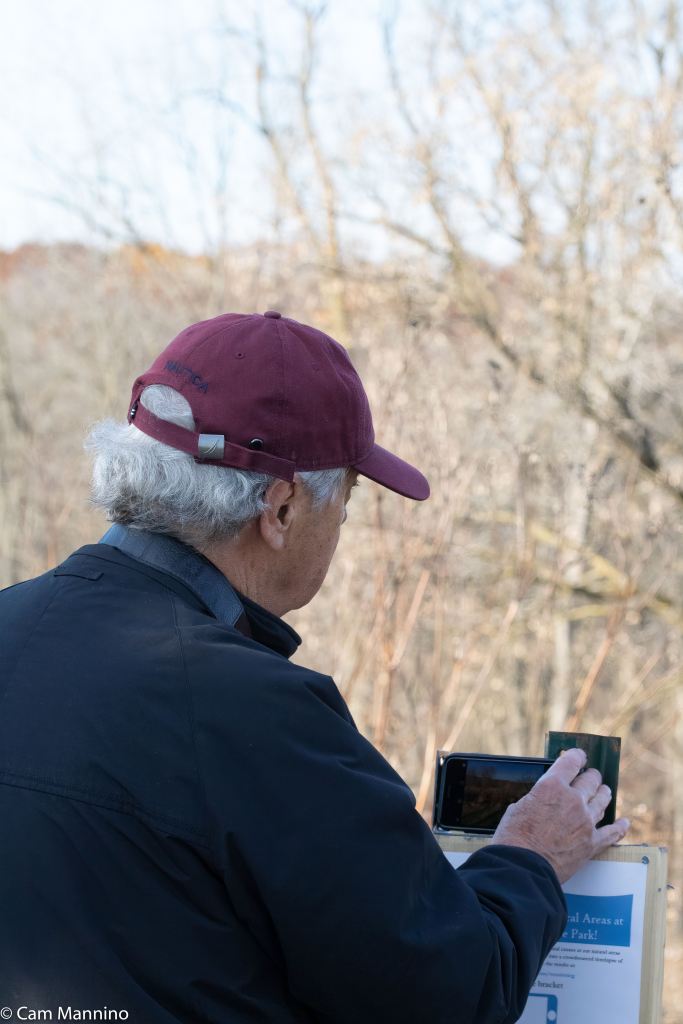
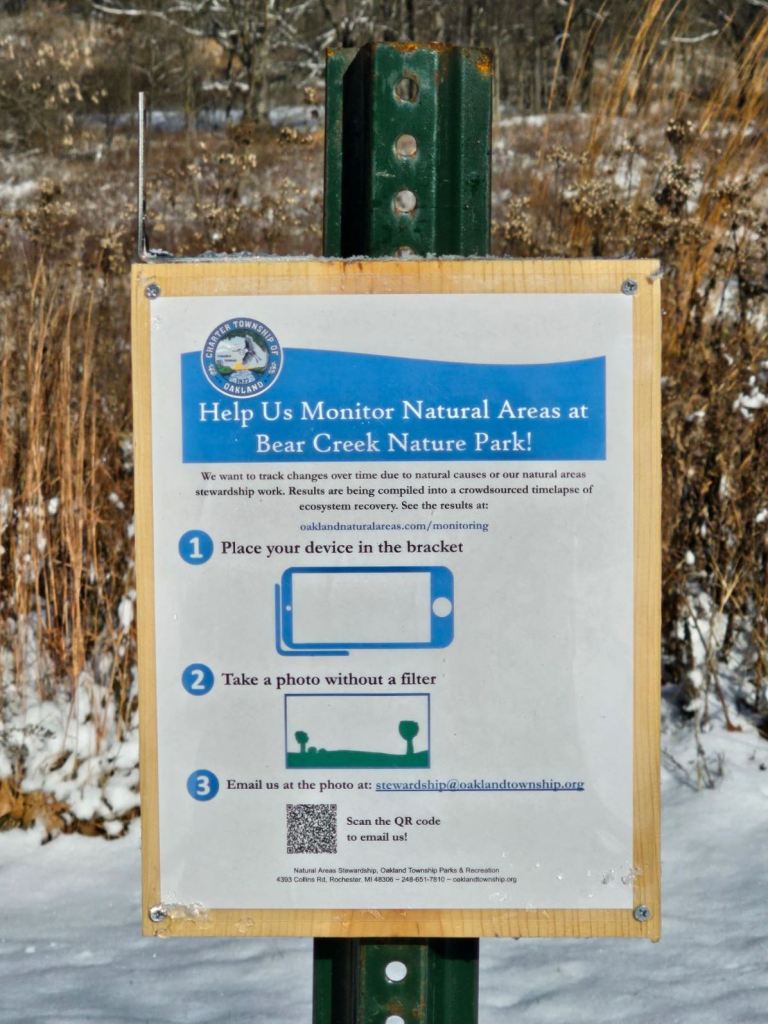
In the Best Sense, Much of Stewardship is “for the Birds”…and Other Wildlife
Many thanks to Paul Birtwhistle and Bob Bonin for generously sharing their amazing autumn photos for this blog while I was away. Isn’t it remarkable how many birds, from all over North and South America, find their way to our small green corner of the world each year? Just the visitors in this blog include: the Tree Sparrow and the White-crowned Sparrow from the Arctic tundra, the Wood Duck leaving for wintering grounds in Cuba, the tiny Magnolia Warbler heading west to Mexico’s Yucatan and from there across the Caribbean to Cuba and Haiti and the little Black-throated Green Warbler ending up on the northern edge of South America.
And I’m always astonished that Eastern Kingbirds (Tyrannus tyrannus) who arrive here to breed each year, leave our parks in late summer to fly to Central America, some of them even finding their way to Peru and the Amazon, for heaven’s sake!
What brings these winged visitors here? Well, it starts with our yearly flush of insects in the spring. For thousands of years, insects have emerged from cocoons, chrysalises, eggs, whatever, at just the right time to become nutritious food for weary migrants on their way north. During summer and fall, bountiful caterpillars, adult insects, native fruit and seeds provide a well-rounded diet for adult birds and their voracious young. In winter, nuts, seeds and plenty of caterpillars hidden under leaf litter or frozen in bark crevices and along branches provide the fat and protein to sustain the birds who brighten our winter days.
So all those colorful birds that Paul and Bob recorded this autumn reside or pass through here because Oakland Township wisely preserved its open land for the last fifty years, and stewardship crews have kept working since to restore it to the healthy, nourishing habitat that nature intended.
But will these avian visitors keep returning? Time will tell with climate change altering our seasons. But our stewardship team and volunteers direct all of their efforts toward supporting the habitats these avian visitors and all of our native wildlife have counted on for countless generations.
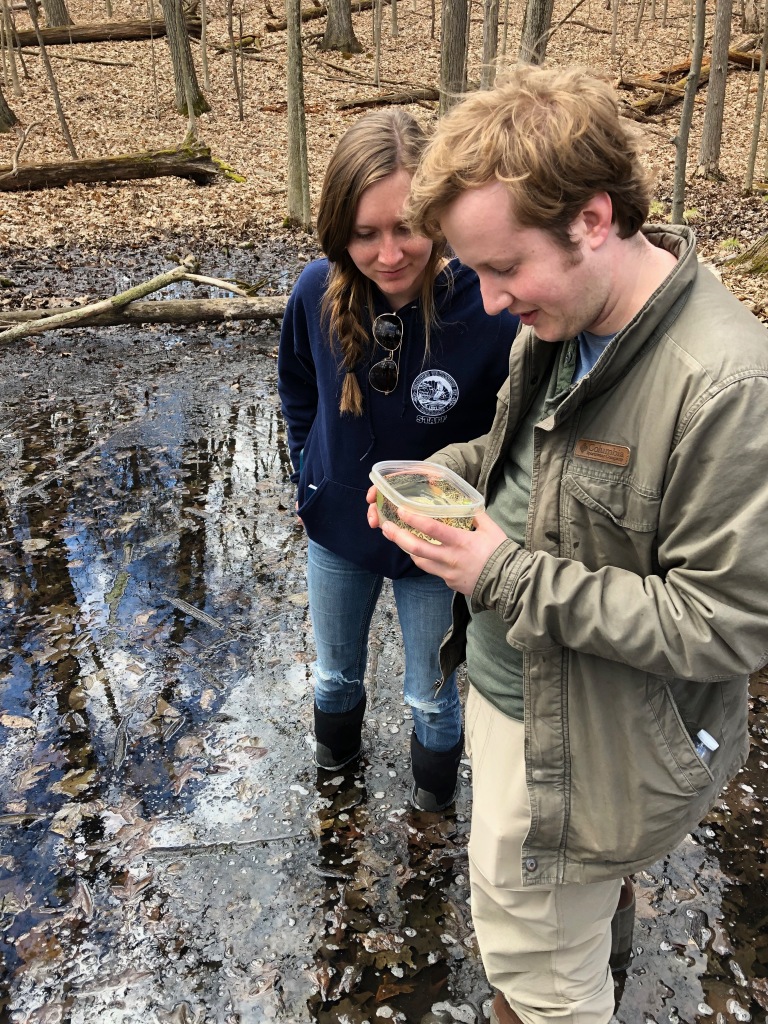

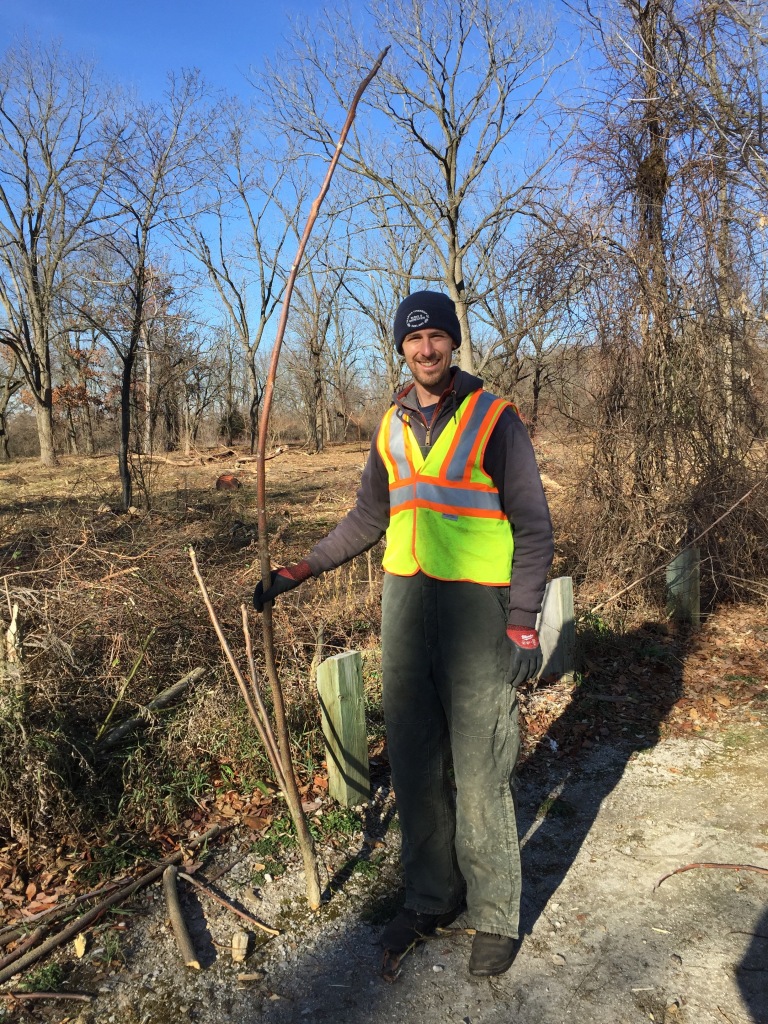
Stewardship work restores dried wetlands, monitors vernal pools and protects streams and ponds where many insects raise their young. Staff and volunteers harvest, clean and sow native seed, because the leaves of native plants are the ones that native caterpillars have evolved to eat. Our stewardship teams spend hours throughout the year removing invasive and non-native plants, most of whose leaves are toxic for insect young and whose fruit is drastically less nutritious. All of our stewardship efforts are bent toward recreating the healthy, balanced, diverse landscape that nature provided and managed for millennia.
It’s not the solution to all of nature’s current difficulties. But it’s something we residents can do at home and with other volunteers and land stewards, year after year, here in our own corners of this threatened, spectacular planet. I’m happy to be part of it – and I know you are, too. Join us when you can. The stewardship volunteer and event info is right here on Natural Areas Notebook. Many hands, as they say, make light work!




